Financial Accounting and Control
VerifiedAdded on 2020/07/23
|37
|2902
|88
AI Summary
This assignment delves into the world of financial accounting, covering topics such as sales and purchase ledgers, control accounts, and suspense accounts. It highlights the significance of financial accounting in analyzing a company's overall financial performance and prepares students for real-world scenarios.
Contribute Materials
Your contribution can guide someone’s learning journey. Share your
documents today.
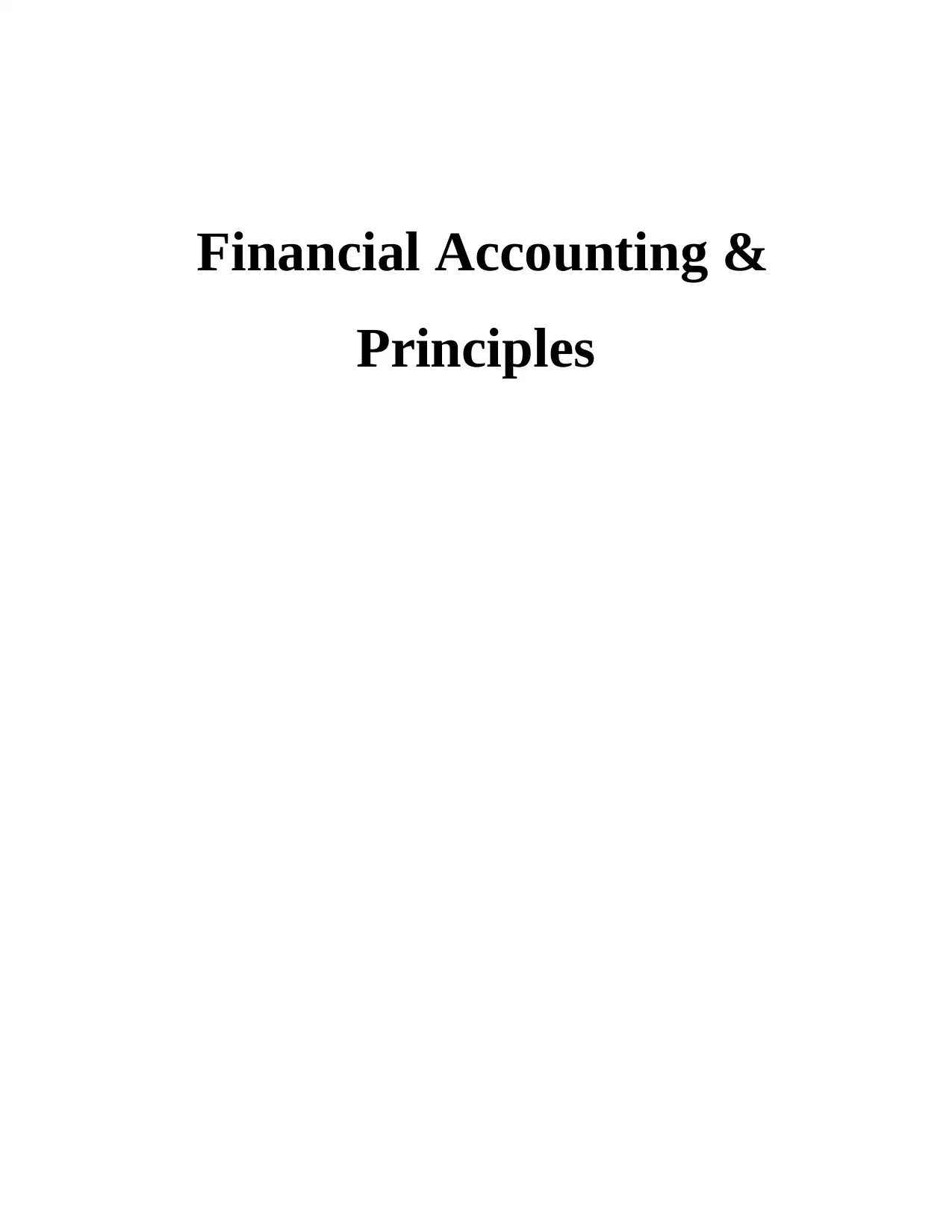
Financial Accounting &
Principles
Principles
Secure Best Marks with AI Grader
Need help grading? Try our AI Grader for instant feedback on your assignments.
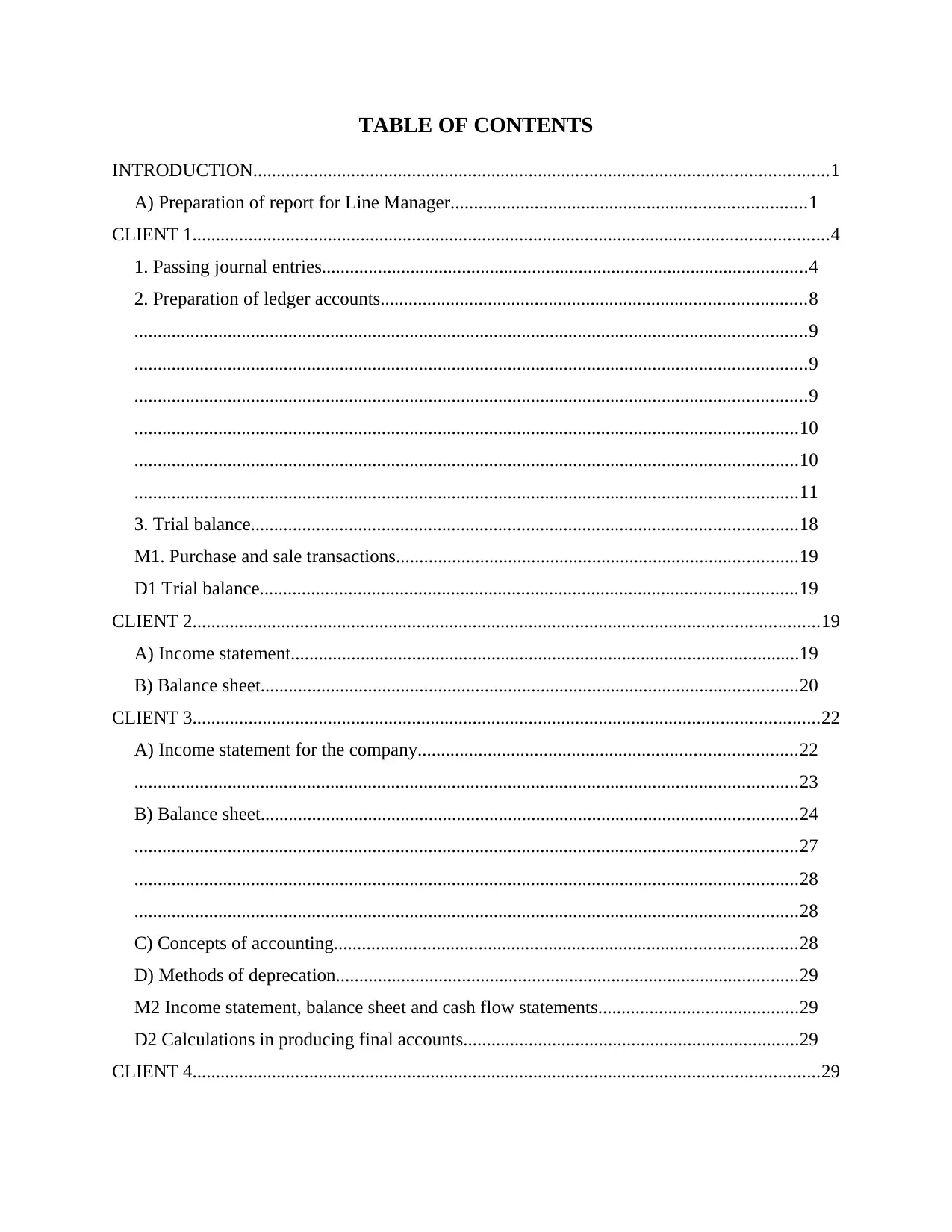
TABLE OF CONTENTS
INTRODUCTION...........................................................................................................................1
A) Preparation of report for Line Manager............................................................................1
CLIENT 1........................................................................................................................................4
1. Passing journal entries........................................................................................................4
2. Preparation of ledger accounts...........................................................................................8
................................................................................................................................................9
................................................................................................................................................9
................................................................................................................................................9
..............................................................................................................................................10
..............................................................................................................................................10
..............................................................................................................................................11
3. Trial balance.....................................................................................................................18
M1. Purchase and sale transactions......................................................................................19
D1 Trial balance...................................................................................................................19
CLIENT 2......................................................................................................................................19
A) Income statement.............................................................................................................19
B) Balance sheet...................................................................................................................20
CLIENT 3......................................................................................................................................22
A) Income statement for the company.................................................................................22
..............................................................................................................................................23
B) Balance sheet...................................................................................................................24
..............................................................................................................................................27
..............................................................................................................................................28
..............................................................................................................................................28
C) Concepts of accounting...................................................................................................28
D) Methods of deprecation...................................................................................................29
M2 Income statement, balance sheet and cash flow statements...........................................29
D2 Calculations in producing final accounts........................................................................29
CLIENT 4......................................................................................................................................29
INTRODUCTION...........................................................................................................................1
A) Preparation of report for Line Manager............................................................................1
CLIENT 1........................................................................................................................................4
1. Passing journal entries........................................................................................................4
2. Preparation of ledger accounts...........................................................................................8
................................................................................................................................................9
................................................................................................................................................9
................................................................................................................................................9
..............................................................................................................................................10
..............................................................................................................................................10
..............................................................................................................................................11
3. Trial balance.....................................................................................................................18
M1. Purchase and sale transactions......................................................................................19
D1 Trial balance...................................................................................................................19
CLIENT 2......................................................................................................................................19
A) Income statement.............................................................................................................19
B) Balance sheet...................................................................................................................20
CLIENT 3......................................................................................................................................22
A) Income statement for the company.................................................................................22
..............................................................................................................................................23
B) Balance sheet...................................................................................................................24
..............................................................................................................................................27
..............................................................................................................................................28
..............................................................................................................................................28
C) Concepts of accounting...................................................................................................28
D) Methods of deprecation...................................................................................................29
M2 Income statement, balance sheet and cash flow statements...........................................29
D2 Calculations in producing final accounts........................................................................29
CLIENT 4......................................................................................................................................29
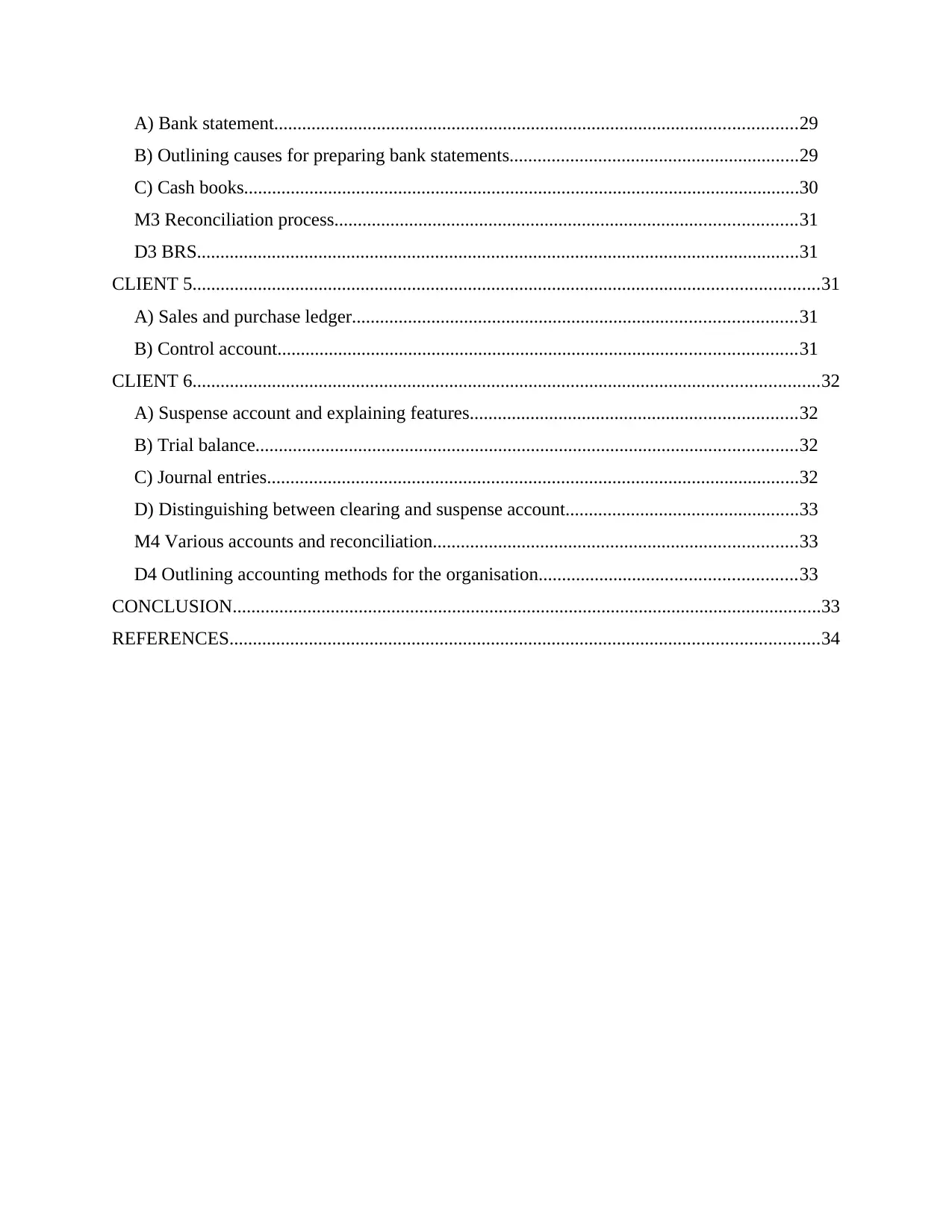
A) Bank statement................................................................................................................29
B) Outlining causes for preparing bank statements..............................................................29
C) Cash books.......................................................................................................................30
M3 Reconciliation process...................................................................................................31
D3 BRS.................................................................................................................................31
CLIENT 5......................................................................................................................................31
A) Sales and purchase ledger...............................................................................................31
B) Control account...............................................................................................................31
CLIENT 6......................................................................................................................................32
A) Suspense account and explaining features......................................................................32
B) Trial balance....................................................................................................................32
C) Journal entries..................................................................................................................32
D) Distinguishing between clearing and suspense account..................................................33
M4 Various accounts and reconciliation..............................................................................33
D4 Outlining accounting methods for the organisation.......................................................33
CONCLUSION..............................................................................................................................33
REFERENCES..............................................................................................................................34
B) Outlining causes for preparing bank statements..............................................................29
C) Cash books.......................................................................................................................30
M3 Reconciliation process...................................................................................................31
D3 BRS.................................................................................................................................31
CLIENT 5......................................................................................................................................31
A) Sales and purchase ledger...............................................................................................31
B) Control account...............................................................................................................31
CLIENT 6......................................................................................................................................32
A) Suspense account and explaining features......................................................................32
B) Trial balance....................................................................................................................32
C) Journal entries..................................................................................................................32
D) Distinguishing between clearing and suspense account..................................................33
M4 Various accounts and reconciliation..............................................................................33
D4 Outlining accounting methods for the organisation.......................................................33
CONCLUSION..............................................................................................................................33
REFERENCES..............................................................................................................................34
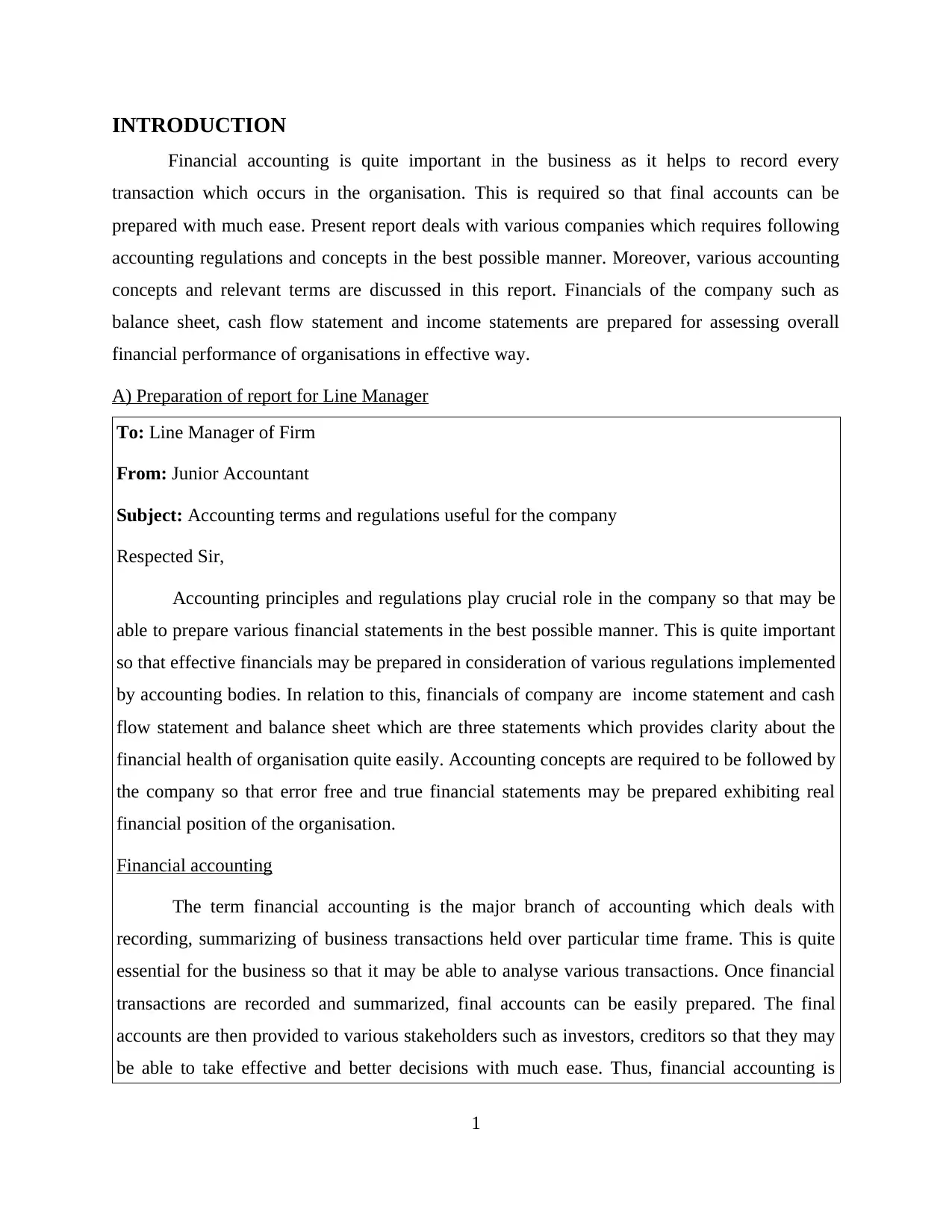
INTRODUCTION
Financial accounting is quite important in the business as it helps to record every
transaction which occurs in the organisation. This is required so that final accounts can be
prepared with much ease. Present report deals with various companies which requires following
accounting regulations and concepts in the best possible manner. Moreover, various accounting
concepts and relevant terms are discussed in this report. Financials of the company such as
balance sheet, cash flow statement and income statements are prepared for assessing overall
financial performance of organisations in effective way.
A) Preparation of report for Line Manager
To: Line Manager of Firm
From: Junior Accountant
Subject: Accounting terms and regulations useful for the company
Respected Sir,
Accounting principles and regulations play crucial role in the company so that may be
able to prepare various financial statements in the best possible manner. This is quite important
so that effective financials may be prepared in consideration of various regulations implemented
by accounting bodies. In relation to this, financials of company are income statement and cash
flow statement and balance sheet which are three statements which provides clarity about the
financial health of organisation quite easily. Accounting concepts are required to be followed by
the company so that error free and true financial statements may be prepared exhibiting real
financial position of the organisation.
Financial accounting
The term financial accounting is the major branch of accounting which deals with
recording, summarizing of business transactions held over particular time frame. This is quite
essential for the business so that it may be able to analyse various transactions. Once financial
transactions are recorded and summarized, final accounts can be easily prepared. The final
accounts are then provided to various stakeholders such as investors, creditors so that they may
be able to take effective and better decisions with much ease. Thus, financial accounting is
1
Financial accounting is quite important in the business as it helps to record every
transaction which occurs in the organisation. This is required so that final accounts can be
prepared with much ease. Present report deals with various companies which requires following
accounting regulations and concepts in the best possible manner. Moreover, various accounting
concepts and relevant terms are discussed in this report. Financials of the company such as
balance sheet, cash flow statement and income statements are prepared for assessing overall
financial performance of organisations in effective way.
A) Preparation of report for Line Manager
To: Line Manager of Firm
From: Junior Accountant
Subject: Accounting terms and regulations useful for the company
Respected Sir,
Accounting principles and regulations play crucial role in the company so that may be
able to prepare various financial statements in the best possible manner. This is quite important
so that effective financials may be prepared in consideration of various regulations implemented
by accounting bodies. In relation to this, financials of company are income statement and cash
flow statement and balance sheet which are three statements which provides clarity about the
financial health of organisation quite easily. Accounting concepts are required to be followed by
the company so that error free and true financial statements may be prepared exhibiting real
financial position of the organisation.
Financial accounting
The term financial accounting is the major branch of accounting which deals with
recording, summarizing of business transactions held over particular time frame. This is quite
essential for the business so that it may be able to analyse various transactions. Once financial
transactions are recorded and summarized, final accounts can be easily prepared. The final
accounts are then provided to various stakeholders such as investors, creditors so that they may
be able to take effective and better decisions with much ease. Thus, financial accounting is
1
Secure Best Marks with AI Grader
Need help grading? Try our AI Grader for instant feedback on your assignments.
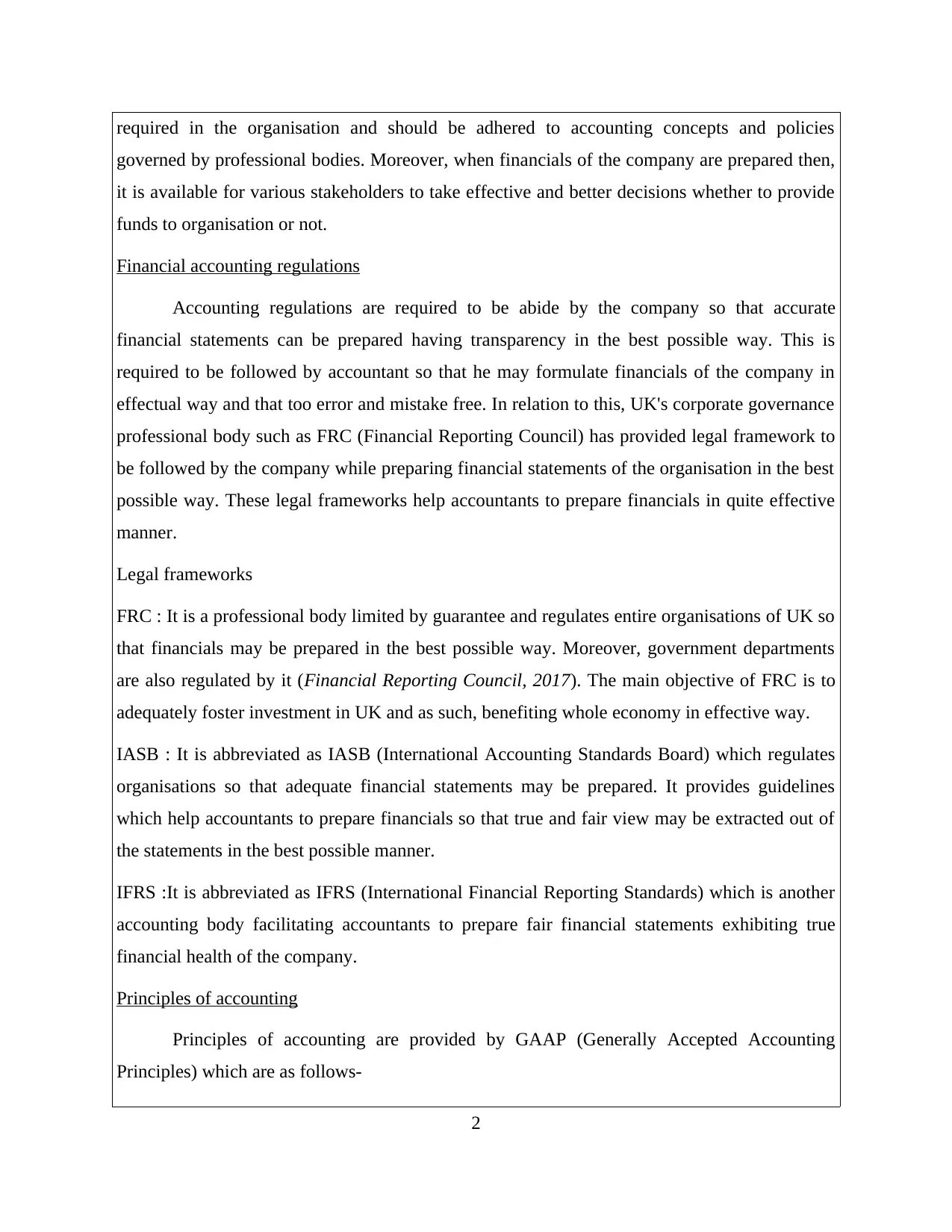
required in the organisation and should be adhered to accounting concepts and policies
governed by professional bodies. Moreover, when financials of the company are prepared then,
it is available for various stakeholders to take effective and better decisions whether to provide
funds to organisation or not.
Financial accounting regulations
Accounting regulations are required to be abide by the company so that accurate
financial statements can be prepared having transparency in the best possible way. This is
required to be followed by accountant so that he may formulate financials of the company in
effectual way and that too error and mistake free. In relation to this, UK's corporate governance
professional body such as FRC (Financial Reporting Council) has provided legal framework to
be followed by the company while preparing financial statements of the organisation in the best
possible way. These legal frameworks help accountants to prepare financials in quite effective
manner.
Legal frameworks
FRC : It is a professional body limited by guarantee and regulates entire organisations of UK so
that financials may be prepared in the best possible way. Moreover, government departments
are also regulated by it (Financial Reporting Council, 2017). The main objective of FRC is to
adequately foster investment in UK and as such, benefiting whole economy in effective way.
IASB : It is abbreviated as IASB (International Accounting Standards Board) which regulates
organisations so that adequate financial statements may be prepared. It provides guidelines
which help accountants to prepare financials so that true and fair view may be extracted out of
the statements in the best possible manner.
IFRS :It is abbreviated as IFRS (International Financial Reporting Standards) which is another
accounting body facilitating accountants to prepare fair financial statements exhibiting true
financial health of the company.
Principles of accounting
Principles of accounting are provided by GAAP (Generally Accepted Accounting
Principles) which are as follows-
2
governed by professional bodies. Moreover, when financials of the company are prepared then,
it is available for various stakeholders to take effective and better decisions whether to provide
funds to organisation or not.
Financial accounting regulations
Accounting regulations are required to be abide by the company so that accurate
financial statements can be prepared having transparency in the best possible way. This is
required to be followed by accountant so that he may formulate financials of the company in
effectual way and that too error and mistake free. In relation to this, UK's corporate governance
professional body such as FRC (Financial Reporting Council) has provided legal framework to
be followed by the company while preparing financial statements of the organisation in the best
possible way. These legal frameworks help accountants to prepare financials in quite effective
manner.
Legal frameworks
FRC : It is a professional body limited by guarantee and regulates entire organisations of UK so
that financials may be prepared in the best possible way. Moreover, government departments
are also regulated by it (Financial Reporting Council, 2017). The main objective of FRC is to
adequately foster investment in UK and as such, benefiting whole economy in effective way.
IASB : It is abbreviated as IASB (International Accounting Standards Board) which regulates
organisations so that adequate financial statements may be prepared. It provides guidelines
which help accountants to prepare financials so that true and fair view may be extracted out of
the statements in the best possible manner.
IFRS :It is abbreviated as IFRS (International Financial Reporting Standards) which is another
accounting body facilitating accountants to prepare fair financial statements exhibiting true
financial health of the company.
Principles of accounting
Principles of accounting are provided by GAAP (Generally Accepted Accounting
Principles) which are as follows-
2
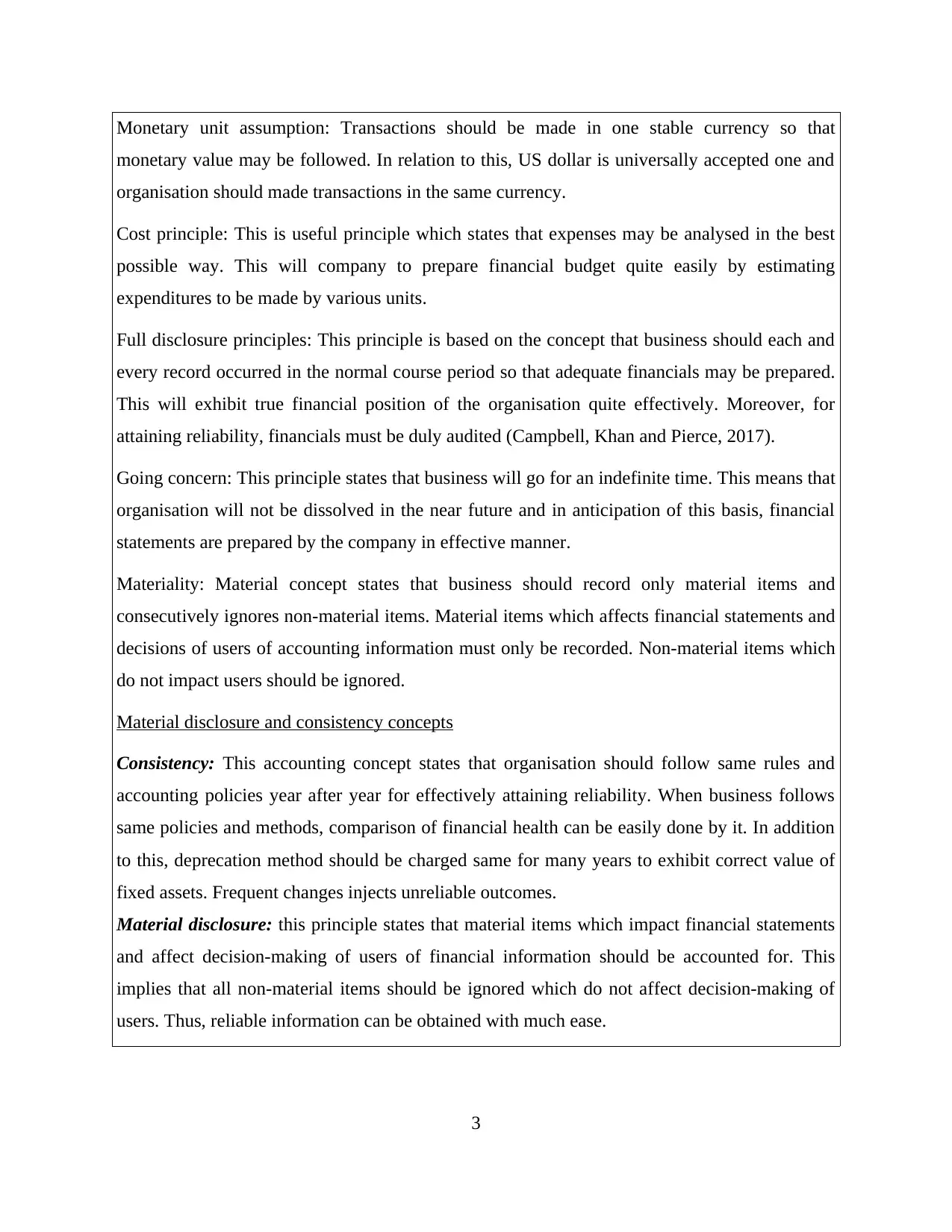
Monetary unit assumption: Transactions should be made in one stable currency so that
monetary value may be followed. In relation to this, US dollar is universally accepted one and
organisation should made transactions in the same currency.
Cost principle: This is useful principle which states that expenses may be analysed in the best
possible way. This will company to prepare financial budget quite easily by estimating
expenditures to be made by various units.
Full disclosure principles: This principle is based on the concept that business should each and
every record occurred in the normal course period so that adequate financials may be prepared.
This will exhibit true financial position of the organisation quite effectively. Moreover, for
attaining reliability, financials must be duly audited (Campbell, Khan and Pierce, 2017).
Going concern: This principle states that business will go for an indefinite time. This means that
organisation will not be dissolved in the near future and in anticipation of this basis, financial
statements are prepared by the company in effective manner.
Materiality: Material concept states that business should record only material items and
consecutively ignores non-material items. Material items which affects financial statements and
decisions of users of accounting information must only be recorded. Non-material items which
do not impact users should be ignored.
Material disclosure and consistency concepts
Consistency: This accounting concept states that organisation should follow same rules and
accounting policies year after year for effectively attaining reliability. When business follows
same policies and methods, comparison of financial health can be easily done by it. In addition
to this, deprecation method should be charged same for many years to exhibit correct value of
fixed assets. Frequent changes injects unreliable outcomes.
Material disclosure: this principle states that material items which impact financial statements
and affect decision-making of users of financial information should be accounted for. This
implies that all non-material items should be ignored which do not affect decision-making of
users. Thus, reliable information can be obtained with much ease.
3
monetary value may be followed. In relation to this, US dollar is universally accepted one and
organisation should made transactions in the same currency.
Cost principle: This is useful principle which states that expenses may be analysed in the best
possible way. This will company to prepare financial budget quite easily by estimating
expenditures to be made by various units.
Full disclosure principles: This principle is based on the concept that business should each and
every record occurred in the normal course period so that adequate financials may be prepared.
This will exhibit true financial position of the organisation quite effectively. Moreover, for
attaining reliability, financials must be duly audited (Campbell, Khan and Pierce, 2017).
Going concern: This principle states that business will go for an indefinite time. This means that
organisation will not be dissolved in the near future and in anticipation of this basis, financial
statements are prepared by the company in effective manner.
Materiality: Material concept states that business should record only material items and
consecutively ignores non-material items. Material items which affects financial statements and
decisions of users of accounting information must only be recorded. Non-material items which
do not impact users should be ignored.
Material disclosure and consistency concepts
Consistency: This accounting concept states that organisation should follow same rules and
accounting policies year after year for effectively attaining reliability. When business follows
same policies and methods, comparison of financial health can be easily done by it. In addition
to this, deprecation method should be charged same for many years to exhibit correct value of
fixed assets. Frequent changes injects unreliable outcomes.
Material disclosure: this principle states that material items which impact financial statements
and affect decision-making of users of financial information should be accounted for. This
implies that all non-material items should be ignored which do not affect decision-making of
users. Thus, reliable information can be obtained with much ease.
3
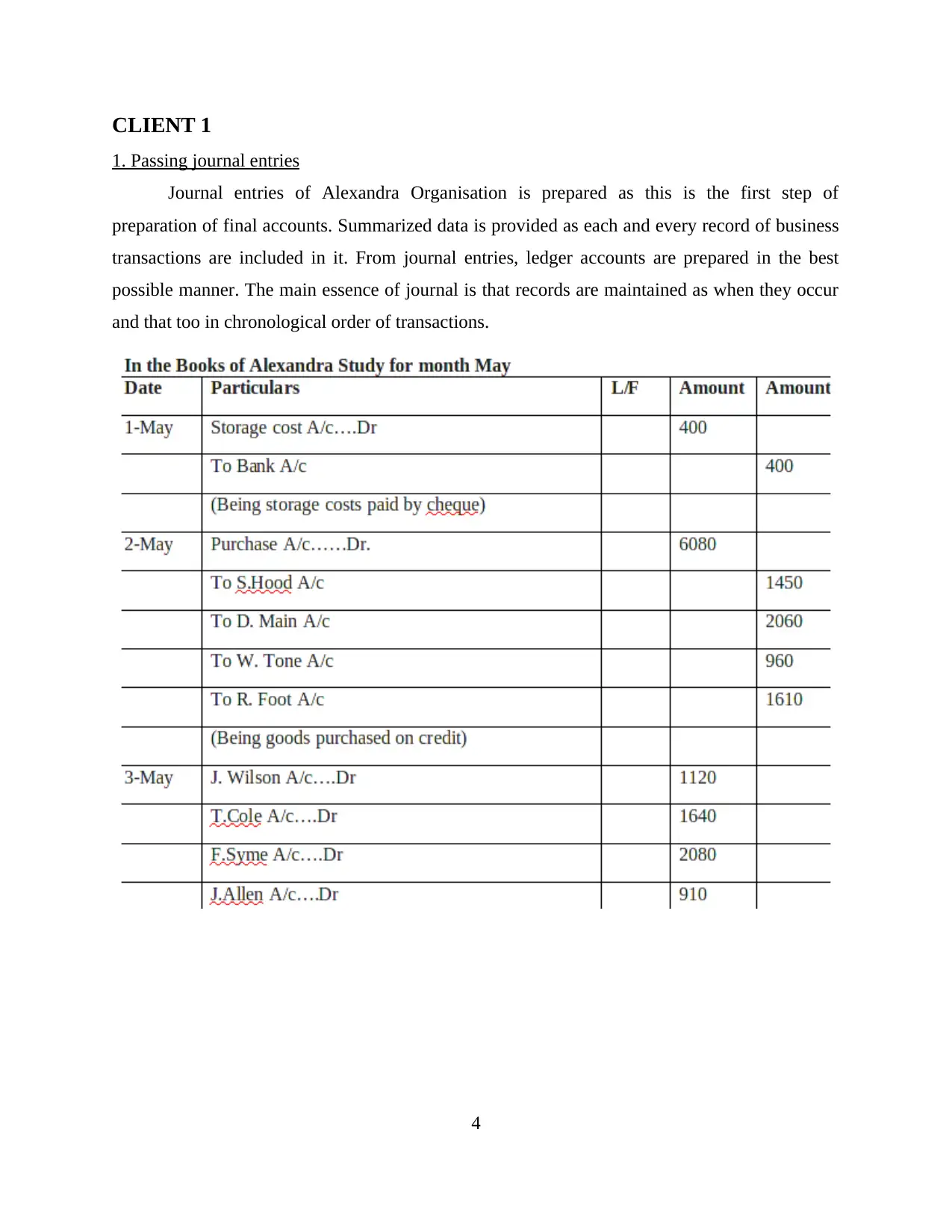
CLIENT 1
1. Passing journal entries
Journal entries of Alexandra Organisation is prepared as this is the first step of
preparation of final accounts. Summarized data is provided as each and every record of business
transactions are included in it. From journal entries, ledger accounts are prepared in the best
possible manner. The main essence of journal is that records are maintained as when they occur
and that too in chronological order of transactions.
4
1. Passing journal entries
Journal entries of Alexandra Organisation is prepared as this is the first step of
preparation of final accounts. Summarized data is provided as each and every record of business
transactions are included in it. From journal entries, ledger accounts are prepared in the best
possible manner. The main essence of journal is that records are maintained as when they occur
and that too in chronological order of transactions.
4
Paraphrase This Document
Need a fresh take? Get an instant paraphrase of this document with our AI Paraphraser
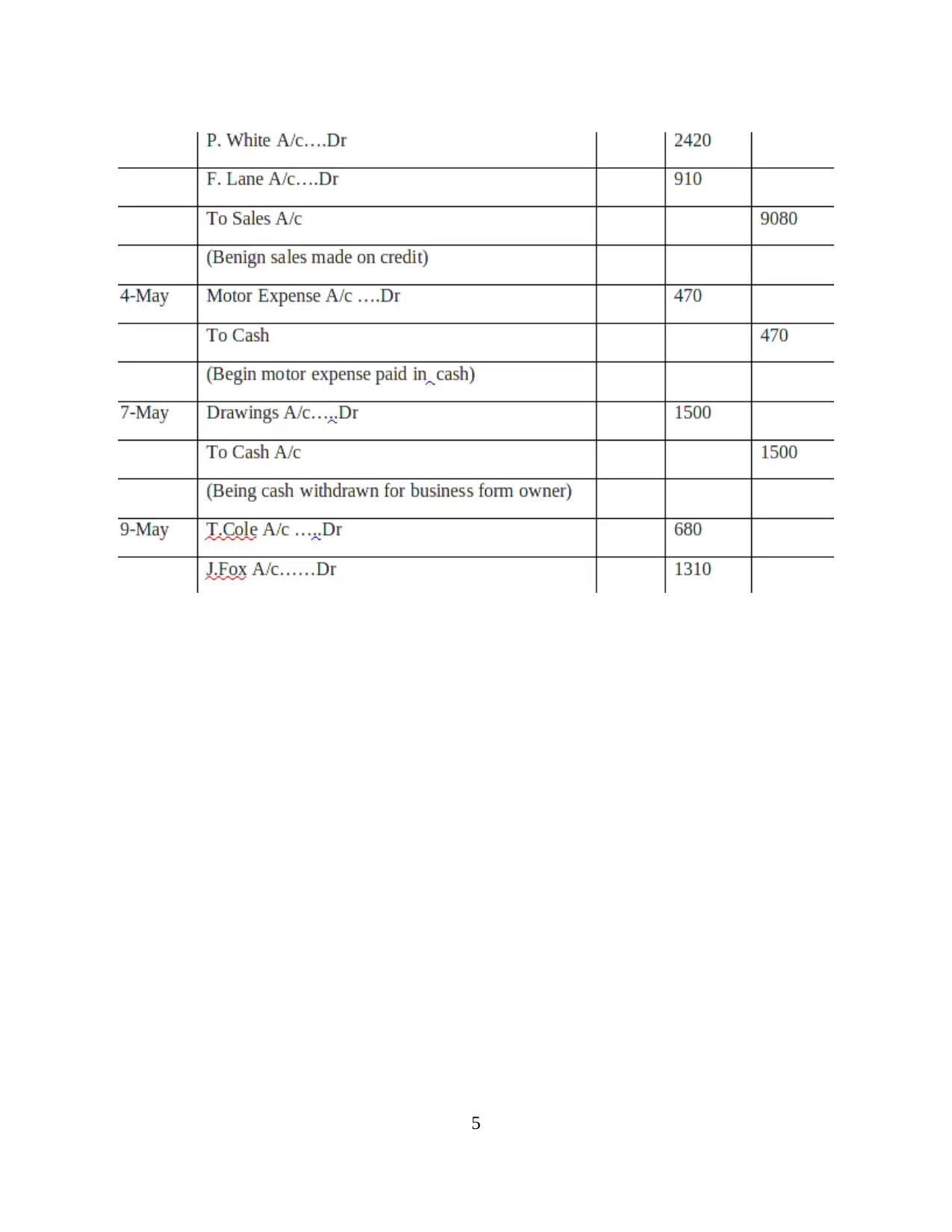
5
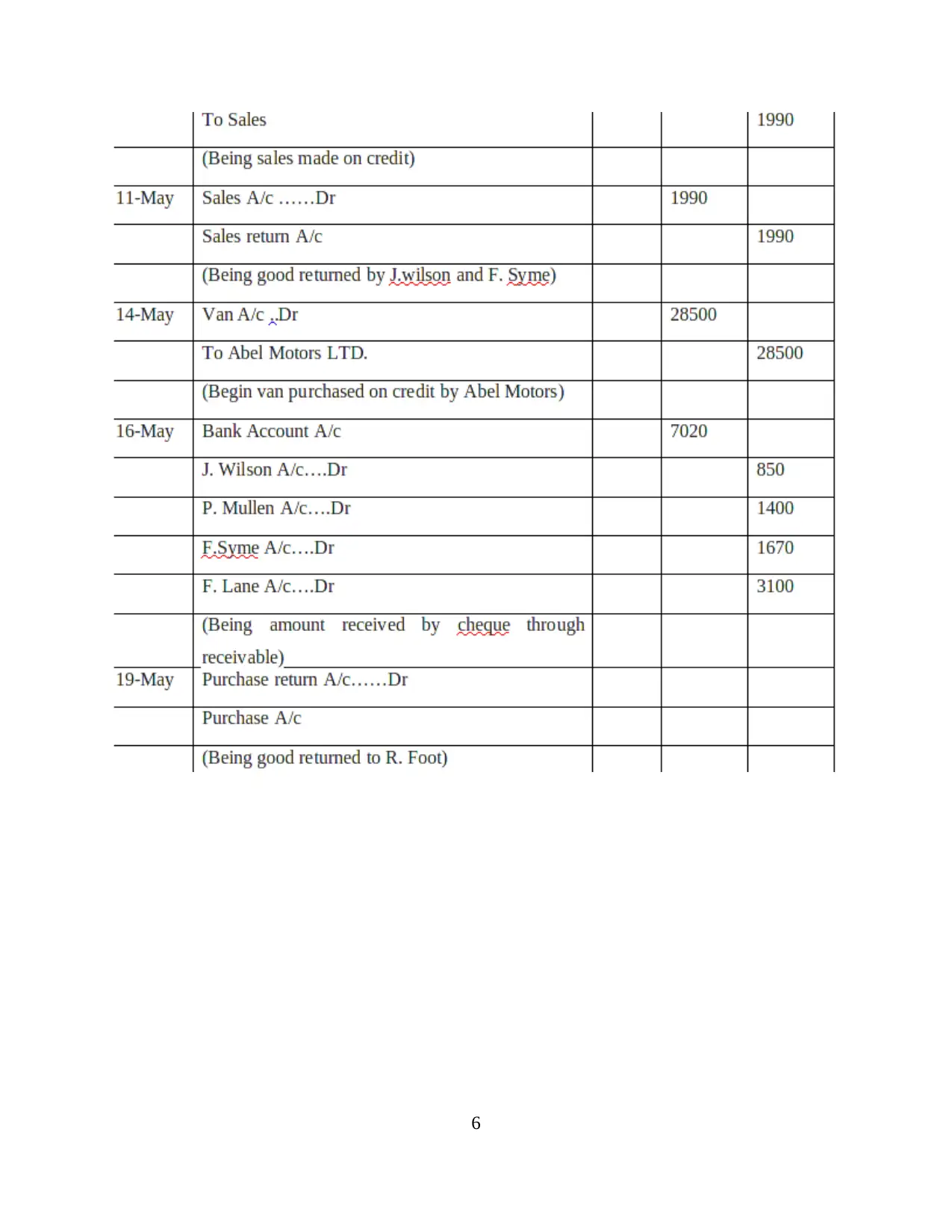
6

7
Secure Best Marks with AI Grader
Need help grading? Try our AI Grader for instant feedback on your assignments.
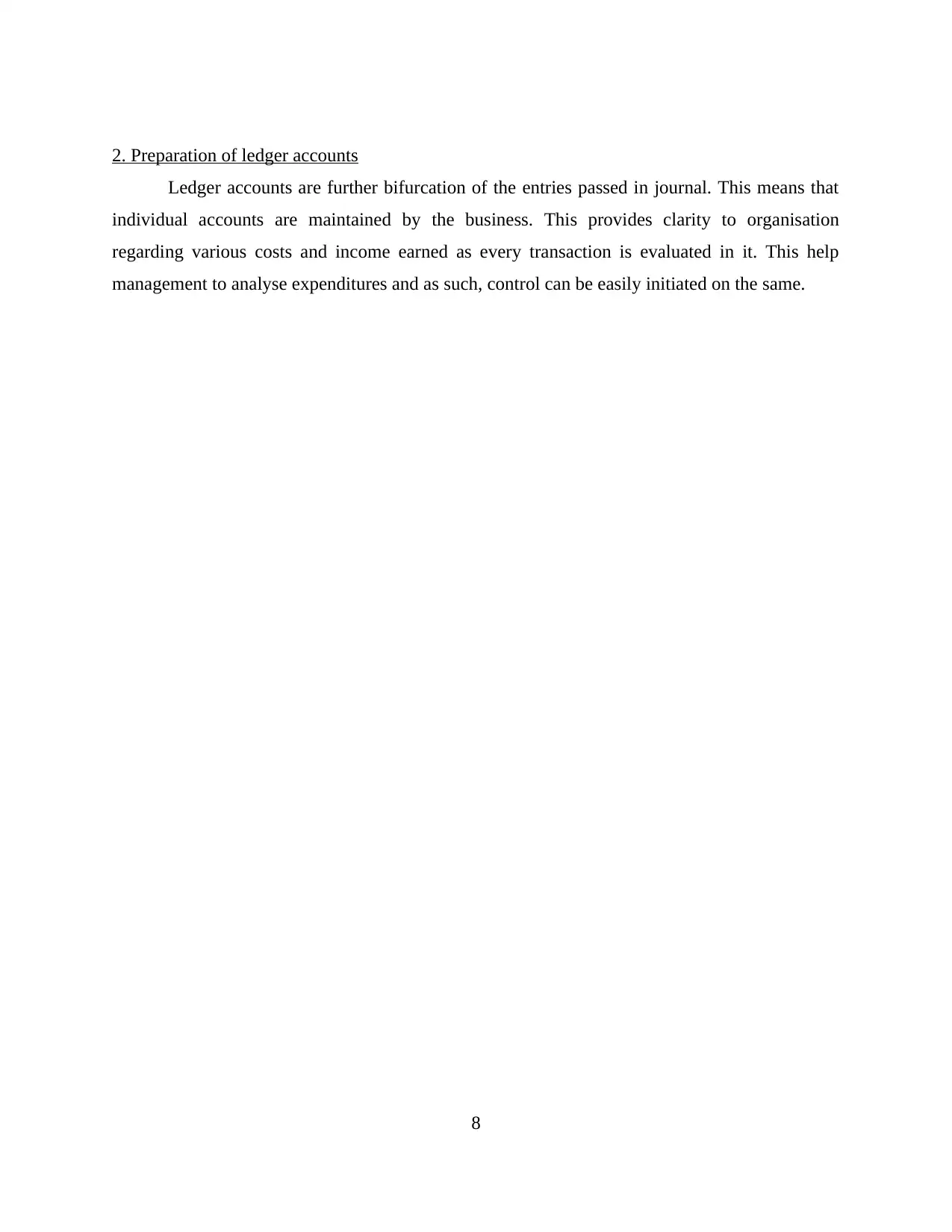
2. Preparation of ledger accounts
Ledger accounts are further bifurcation of the entries passed in journal. This means that
individual accounts are maintained by the business. This provides clarity to organisation
regarding various costs and income earned as every transaction is evaluated in it. This help
management to analyse expenditures and as such, control can be easily initiated on the same.
8
Ledger accounts are further bifurcation of the entries passed in journal. This means that
individual accounts are maintained by the business. This provides clarity to organisation
regarding various costs and income earned as every transaction is evaluated in it. This help
management to analyse expenditures and as such, control can be easily initiated on the same.
8
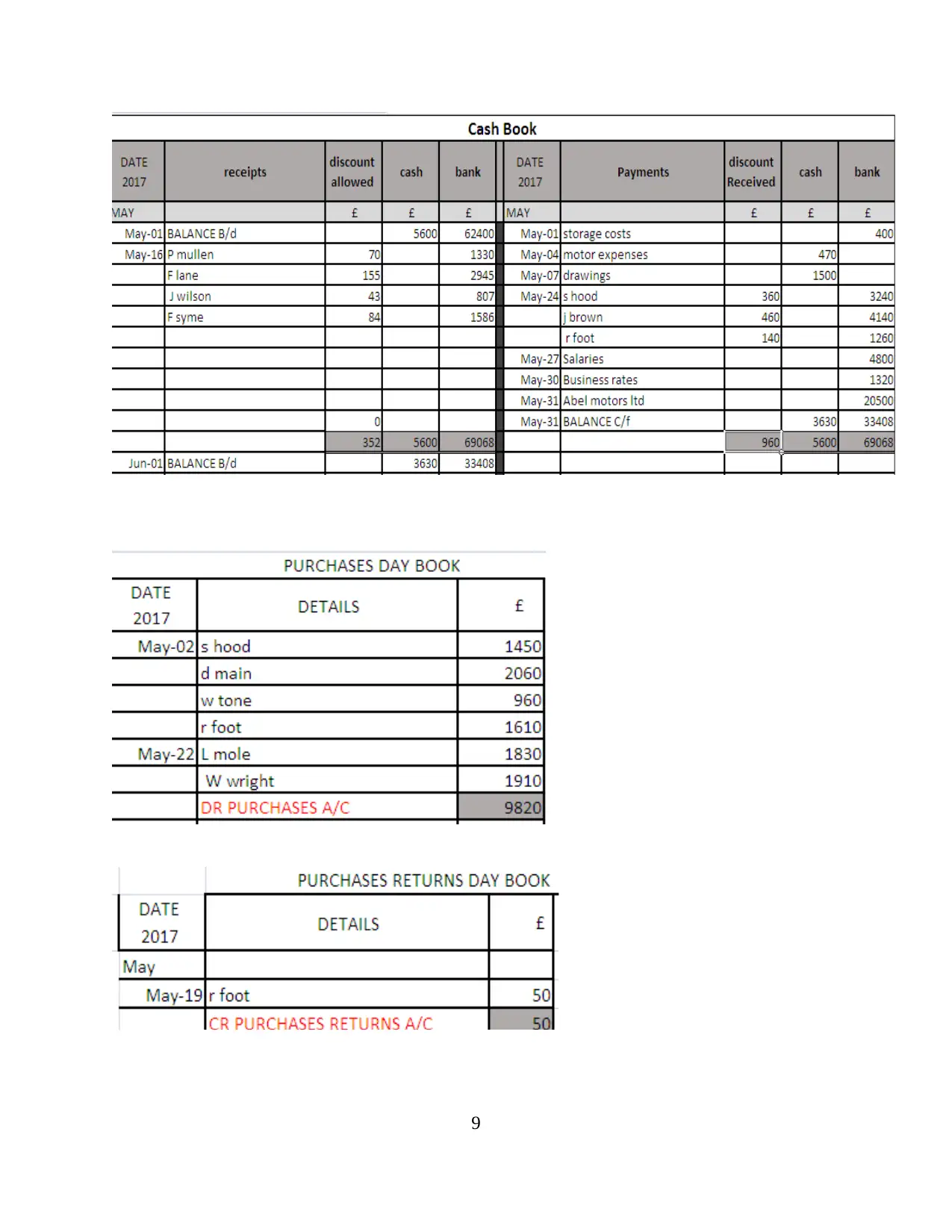
9
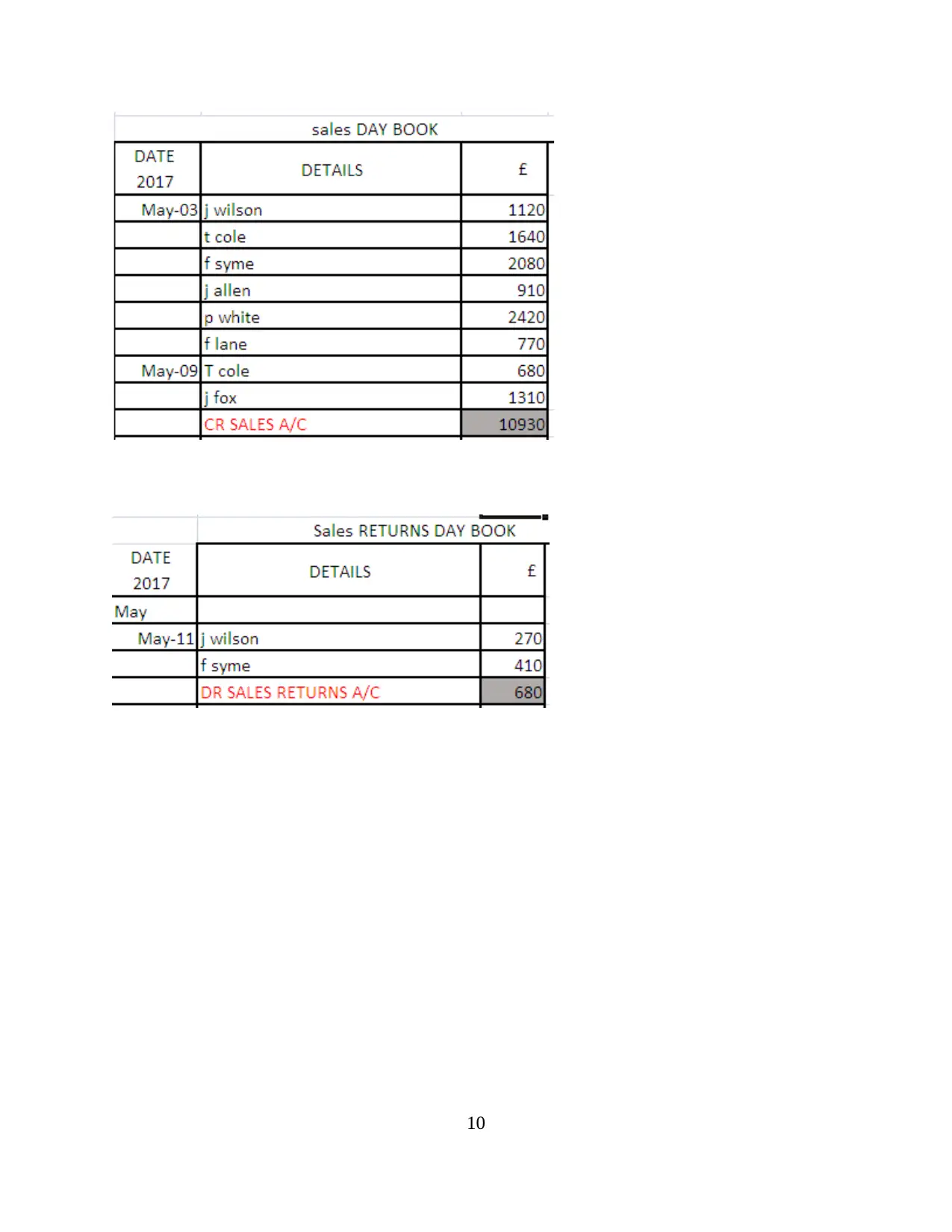
10
Paraphrase This Document
Need a fresh take? Get an instant paraphrase of this document with our AI Paraphraser
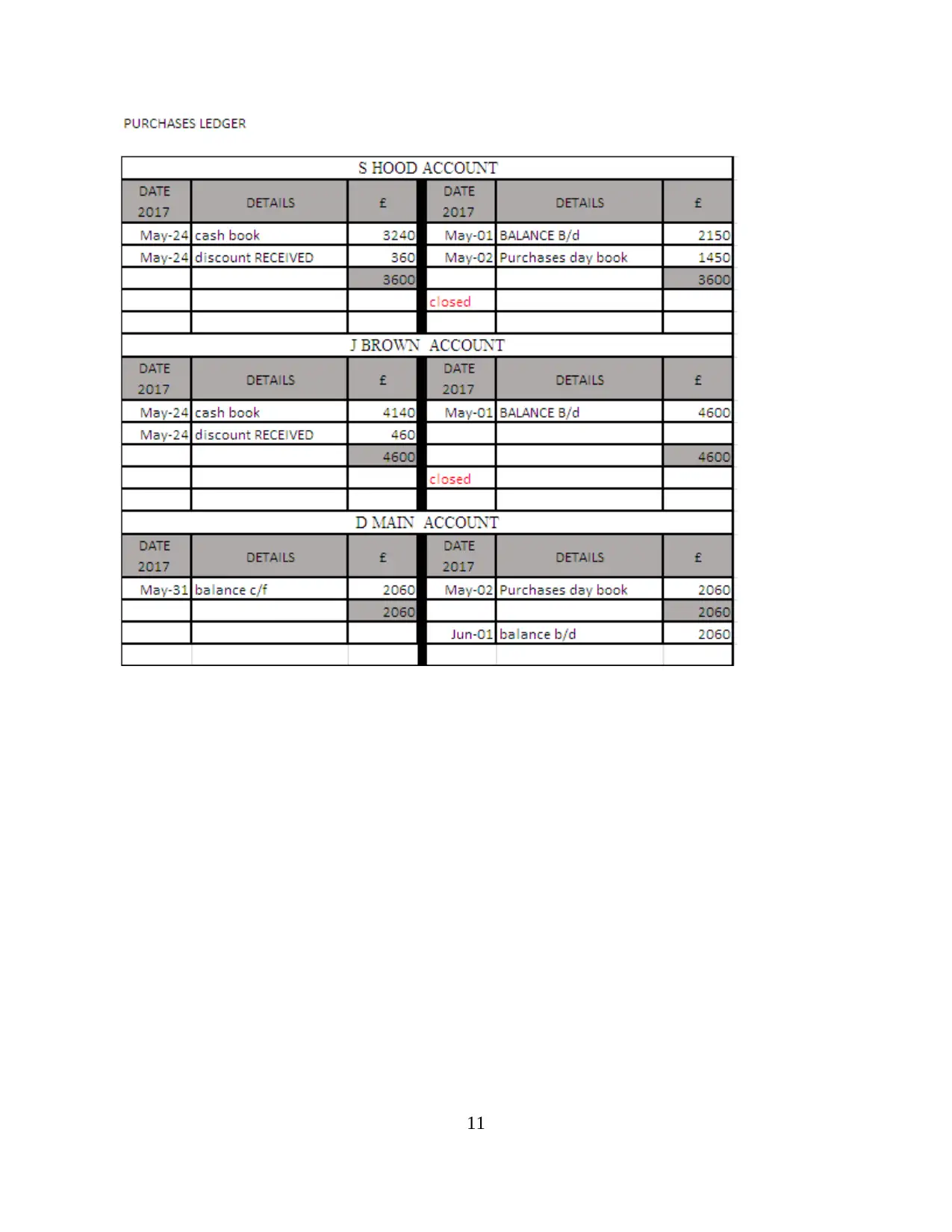
11
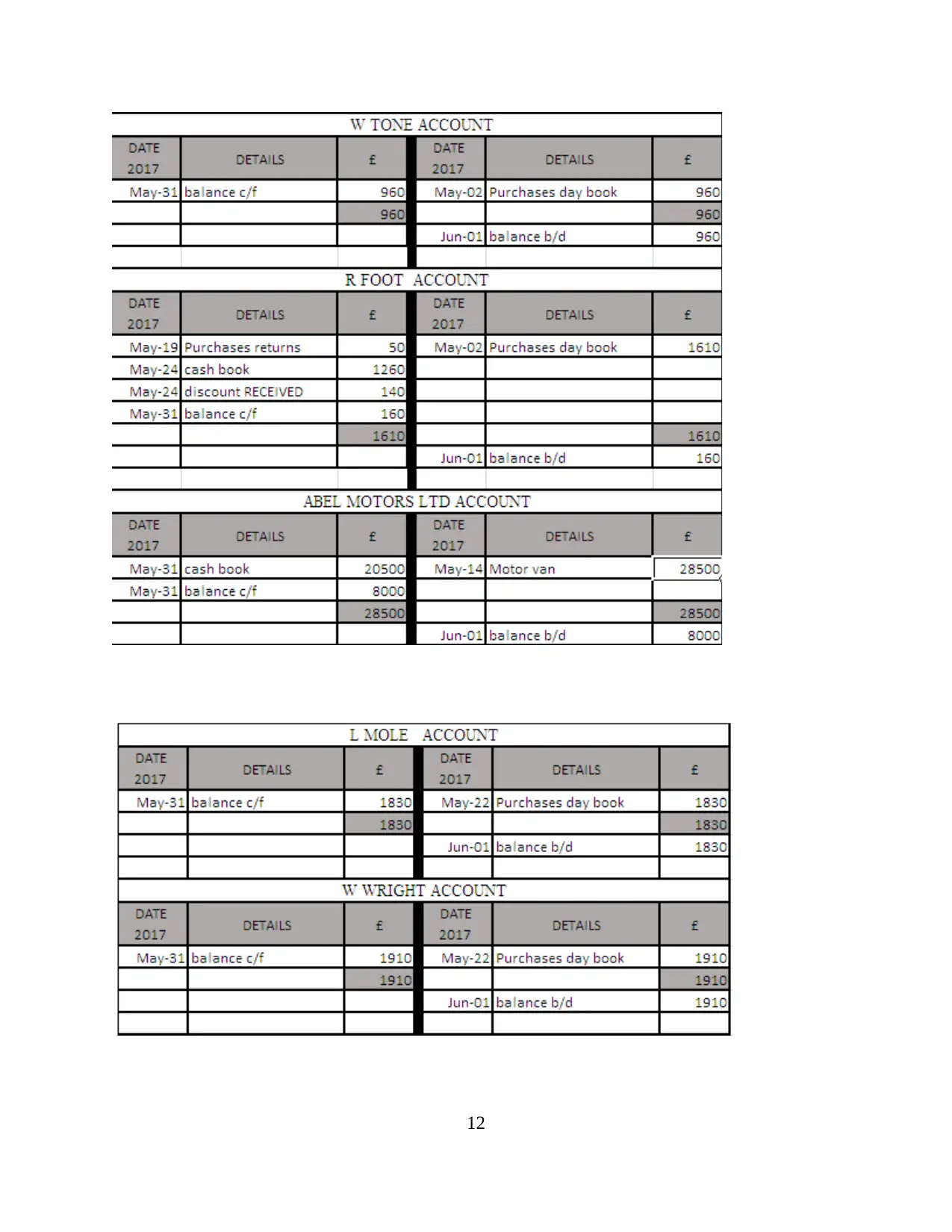
12
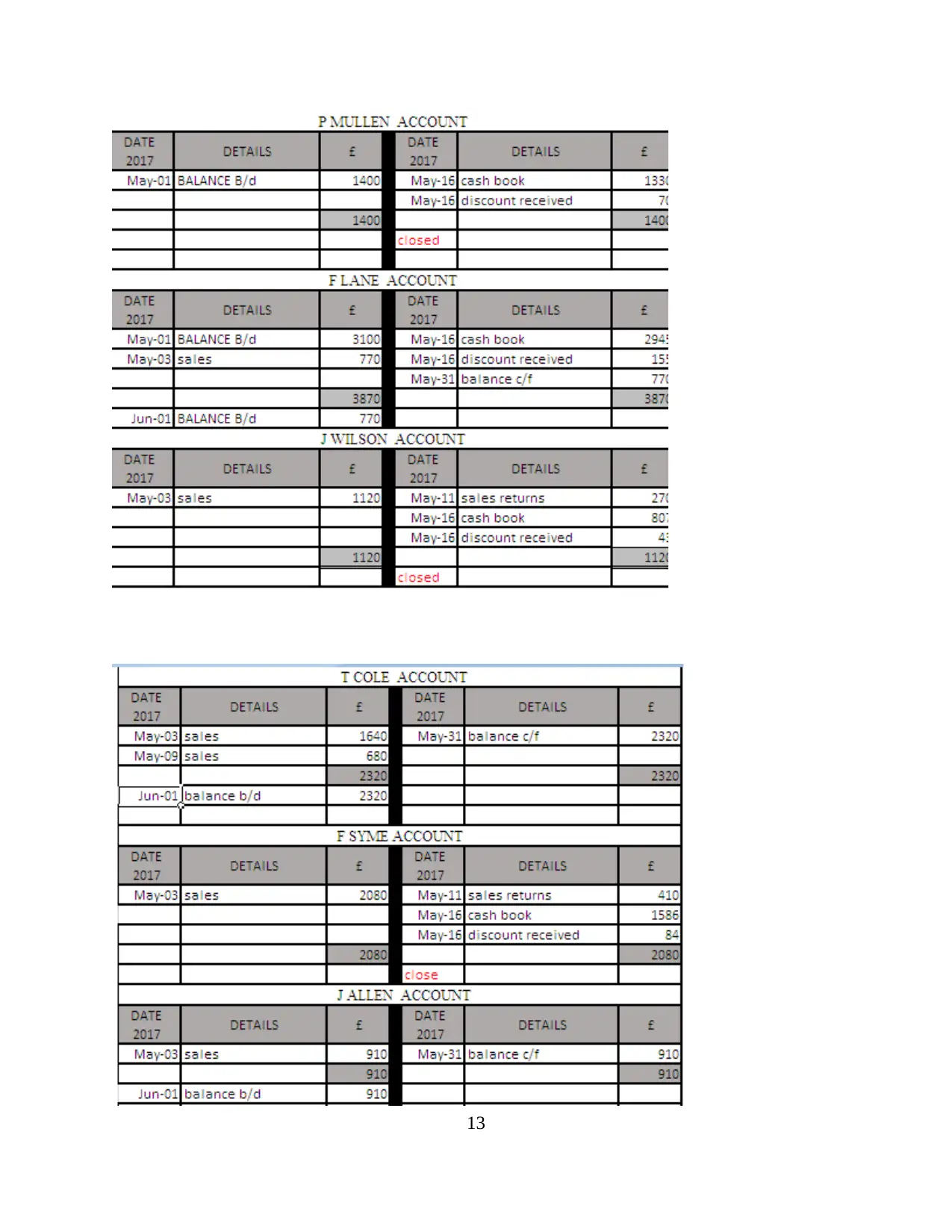
13
Secure Best Marks with AI Grader
Need help grading? Try our AI Grader for instant feedback on your assignments.
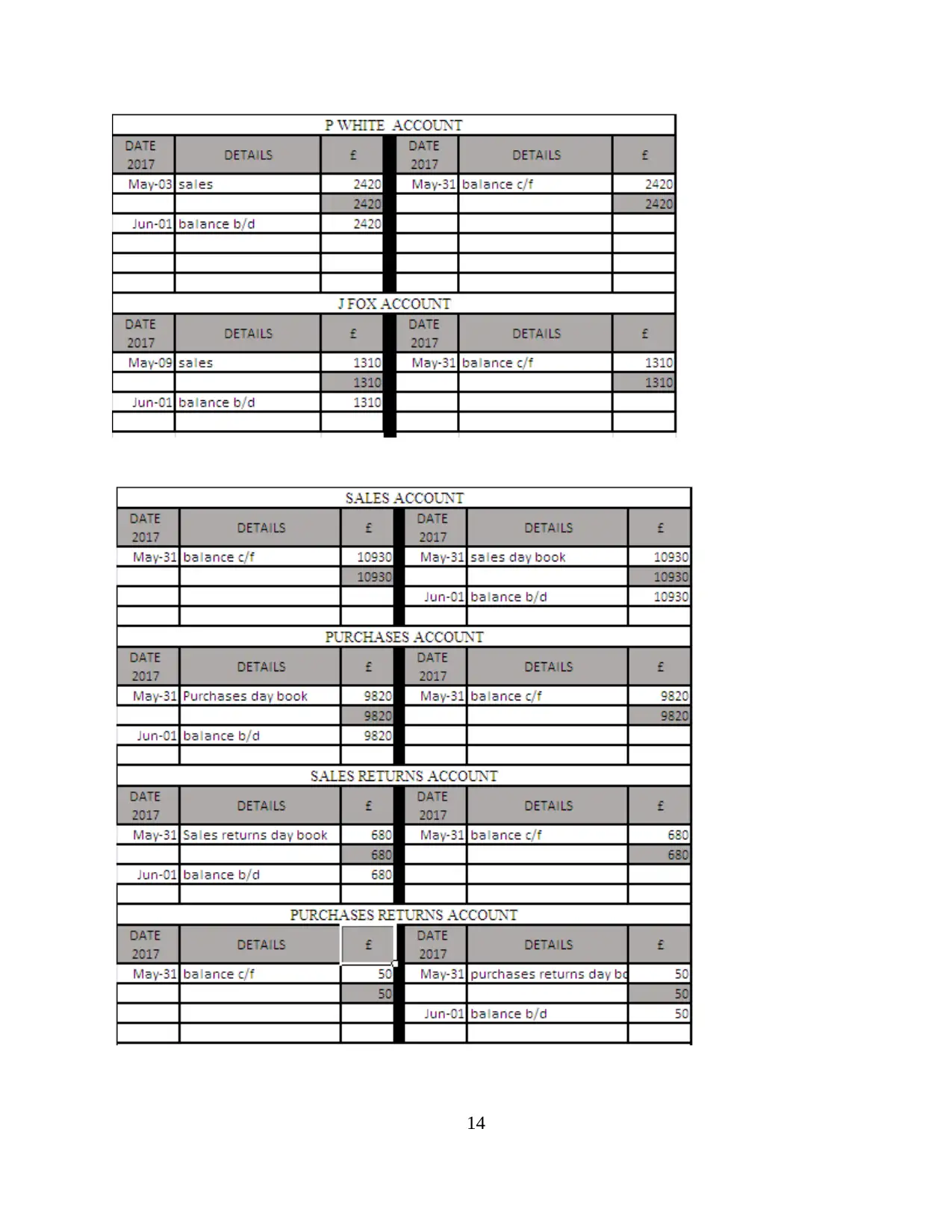
14
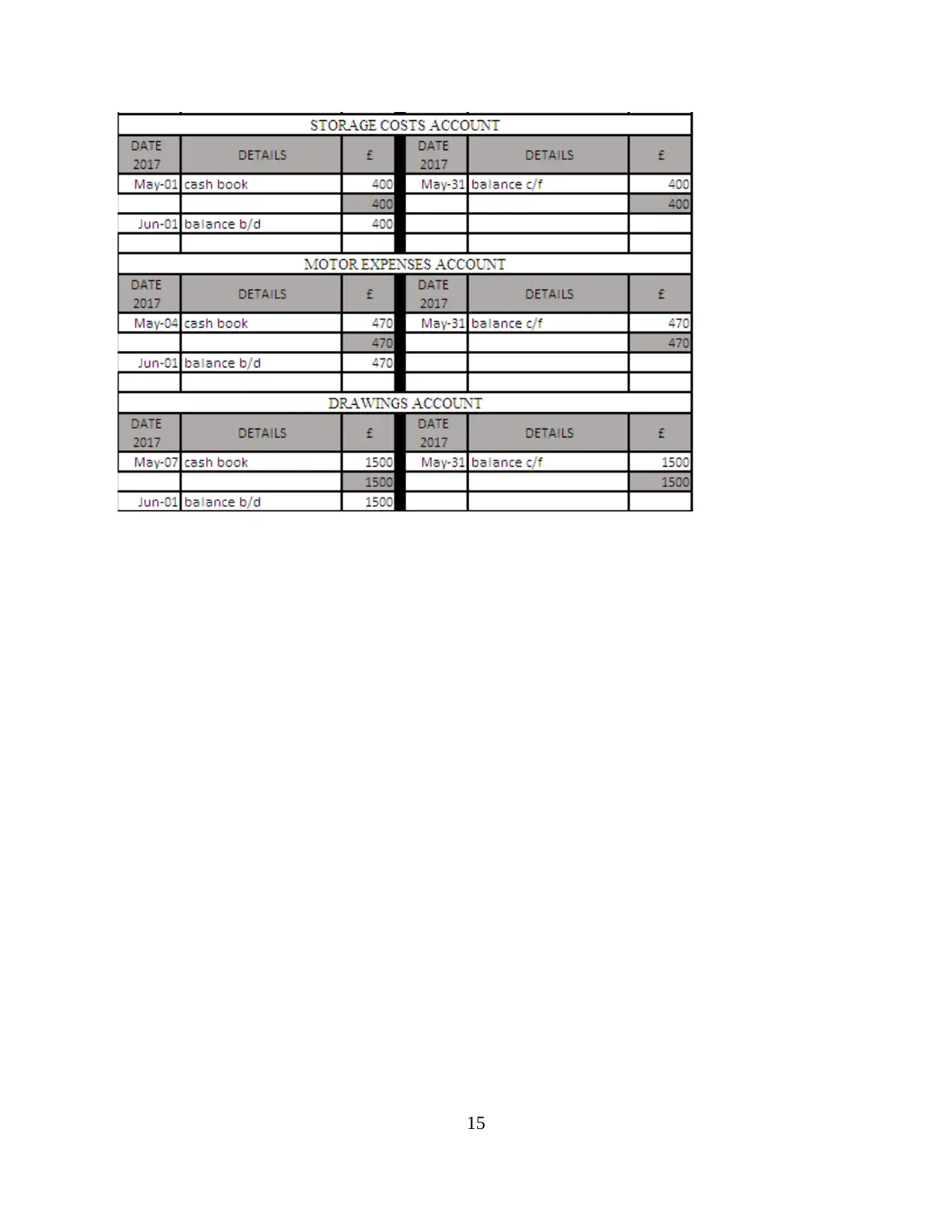
15
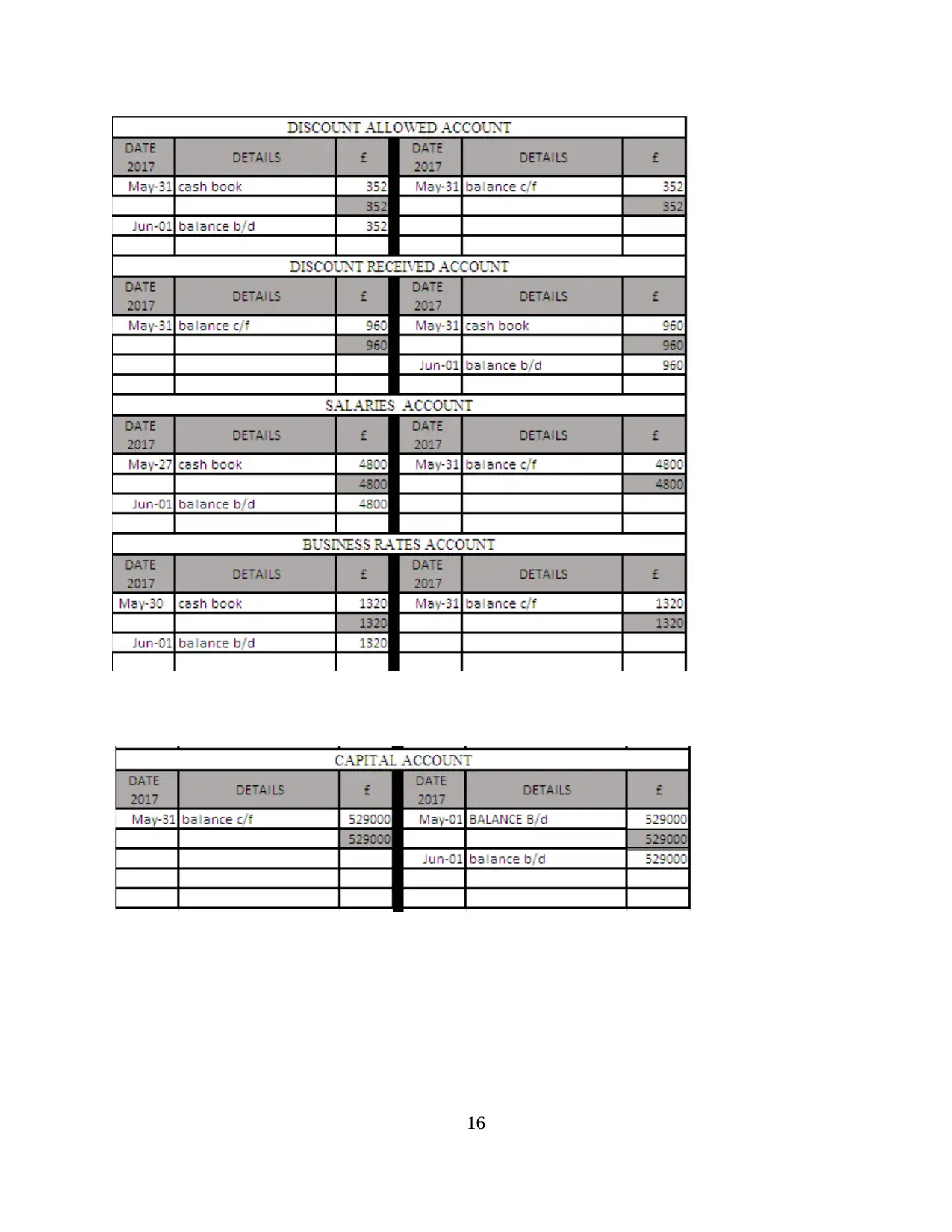
16
Paraphrase This Document
Need a fresh take? Get an instant paraphrase of this document with our AI Paraphraser
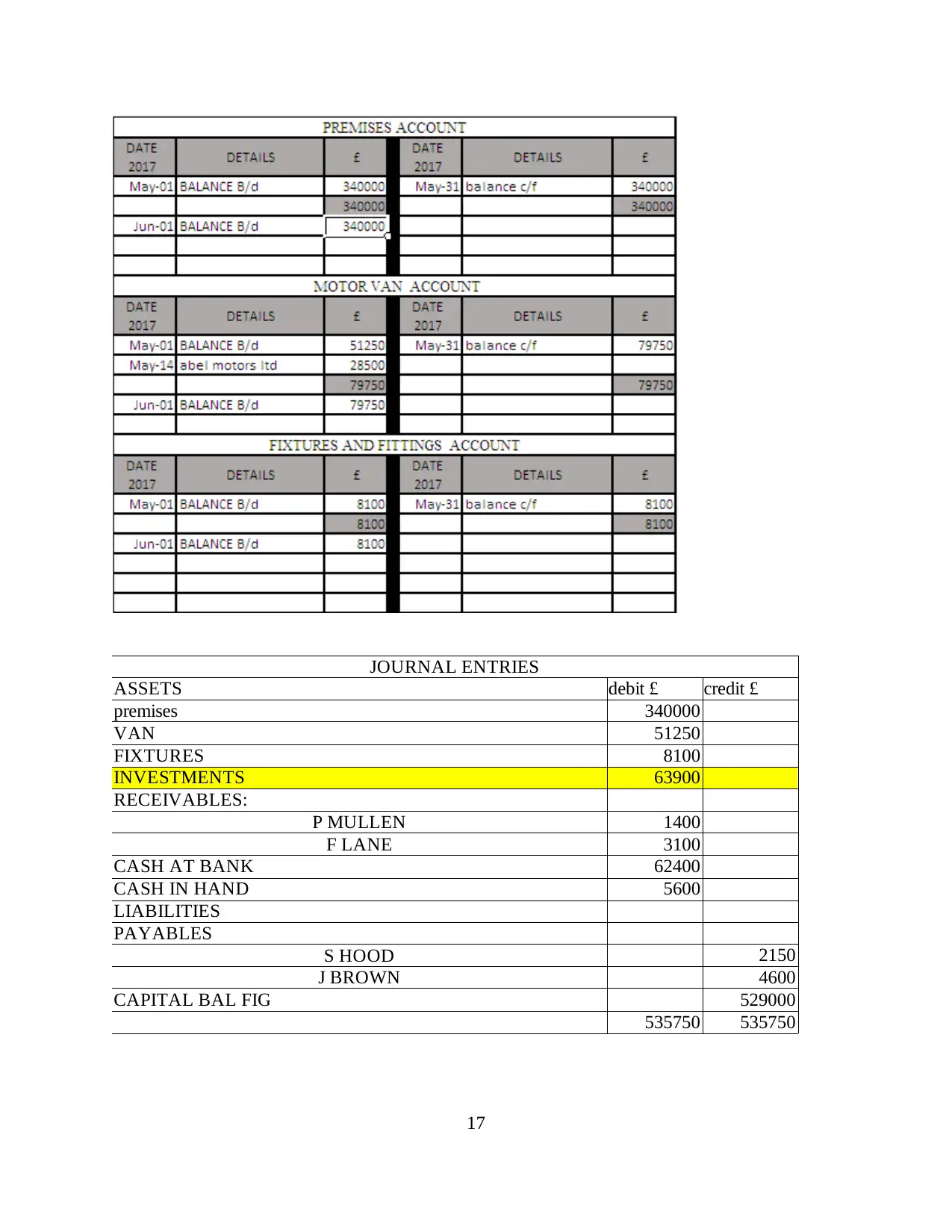
JOURNAL ENTRIES
ASSETS debit £ credit £
premises 340000
VAN 51250
FIXTURES 8100
INVESTMENTS 63900
RECEIVABLES:
P MULLEN 1400
F LANE 3100
CASH AT BANK 62400
CASH IN HAND 5600
LIABILITIES
PAYABLES
S HOOD 2150
J BROWN 4600
CAPITAL BAL FIG 529000
535750 535750
17
ASSETS debit £ credit £
premises 340000
VAN 51250
FIXTURES 8100
INVESTMENTS 63900
RECEIVABLES:
P MULLEN 1400
F LANE 3100
CASH AT BANK 62400
CASH IN HAND 5600
LIABILITIES
PAYABLES
S HOOD 2150
J BROWN 4600
CAPITAL BAL FIG 529000
535750 535750
17
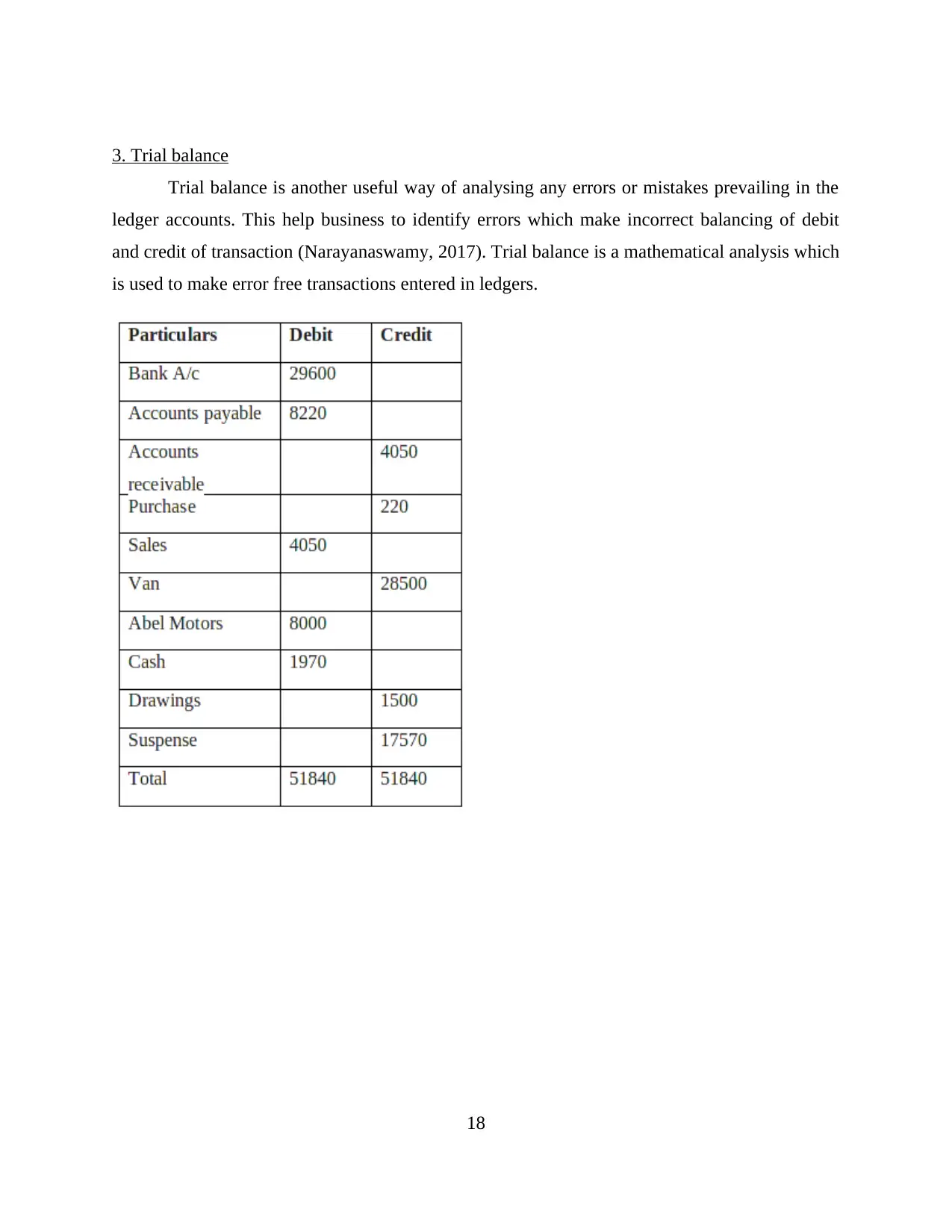
3. Trial balance
Trial balance is another useful way of analysing any errors or mistakes prevailing in the
ledger accounts. This help business to identify errors which make incorrect balancing of debit
and credit of transaction (Narayanaswamy, 2017). Trial balance is a mathematical analysis which
is used to make error free transactions entered in ledgers.
18
Trial balance is another useful way of analysing any errors or mistakes prevailing in the
ledger accounts. This help business to identify errors which make incorrect balancing of debit
and credit of transaction (Narayanaswamy, 2017). Trial balance is a mathematical analysis which
is used to make error free transactions entered in ledgers.
18
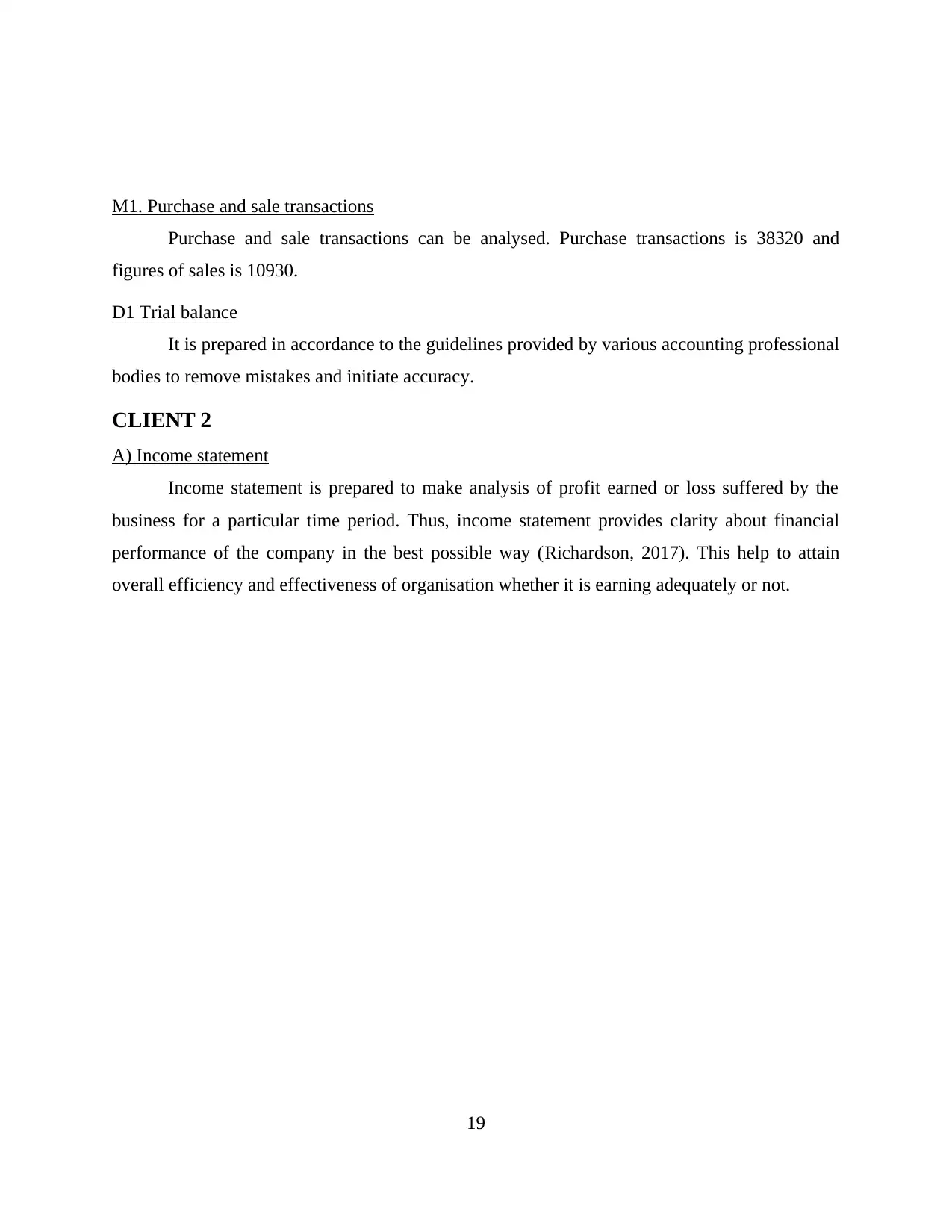
M1. Purchase and sale transactions
Purchase and sale transactions can be analysed. Purchase transactions is 38320 and
figures of sales is 10930.
D1 Trial balance
It is prepared in accordance to the guidelines provided by various accounting professional
bodies to remove mistakes and initiate accuracy.
CLIENT 2
A) Income statement
Income statement is prepared to make analysis of profit earned or loss suffered by the
business for a particular time period. Thus, income statement provides clarity about financial
performance of the company in the best possible way (Richardson, 2017). This help to attain
overall efficiency and effectiveness of organisation whether it is earning adequately or not.
19
Purchase and sale transactions can be analysed. Purchase transactions is 38320 and
figures of sales is 10930.
D1 Trial balance
It is prepared in accordance to the guidelines provided by various accounting professional
bodies to remove mistakes and initiate accuracy.
CLIENT 2
A) Income statement
Income statement is prepared to make analysis of profit earned or loss suffered by the
business for a particular time period. Thus, income statement provides clarity about financial
performance of the company in the best possible way (Richardson, 2017). This help to attain
overall efficiency and effectiveness of organisation whether it is earning adequately or not.
19
Secure Best Marks with AI Grader
Need help grading? Try our AI Grader for instant feedback on your assignments.
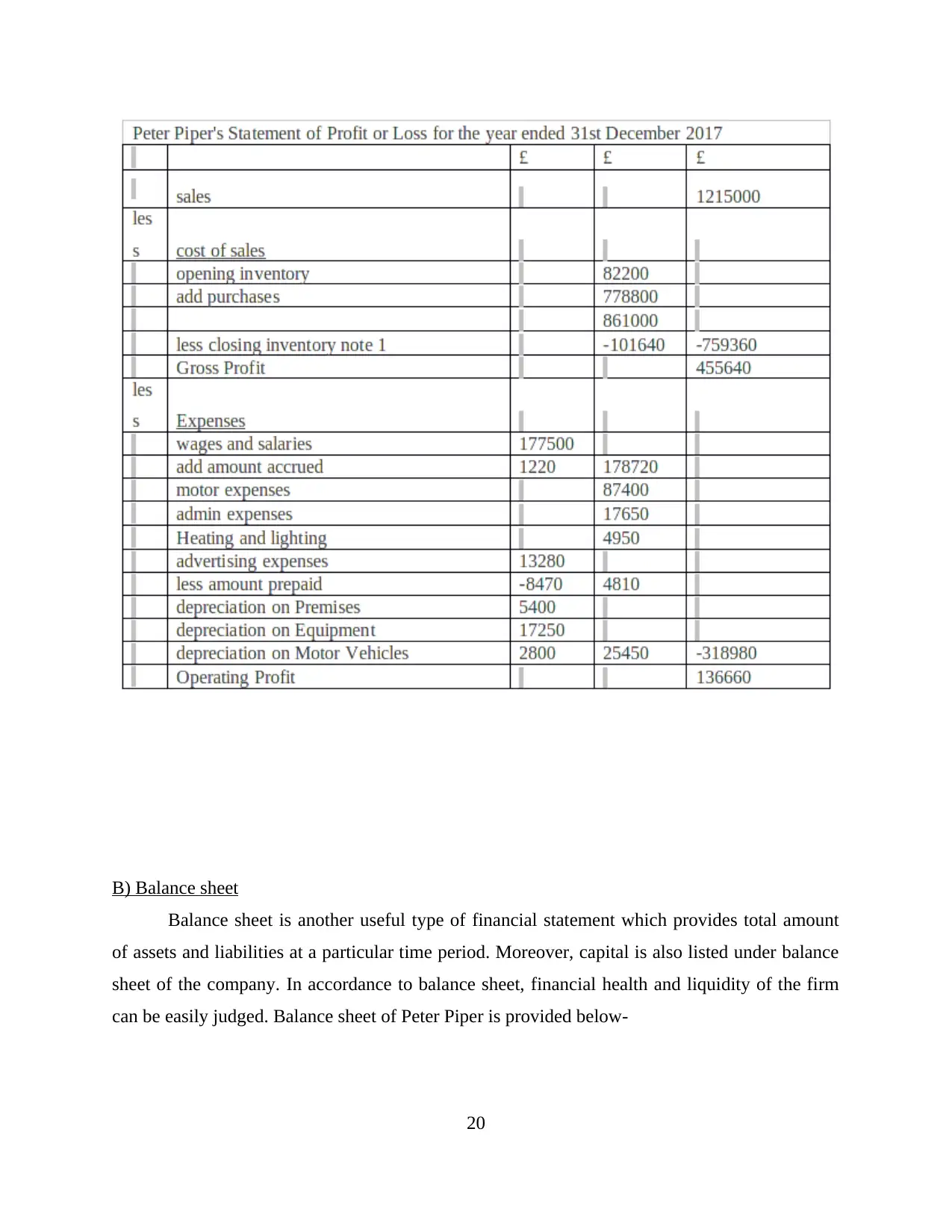
B) Balance sheet
Balance sheet is another useful type of financial statement which provides total amount
of assets and liabilities at a particular time period. Moreover, capital is also listed under balance
sheet of the company. In accordance to balance sheet, financial health and liquidity of the firm
can be easily judged. Balance sheet of Peter Piper is provided below-
20
Balance sheet is another useful type of financial statement which provides total amount
of assets and liabilities at a particular time period. Moreover, capital is also listed under balance
sheet of the company. In accordance to balance sheet, financial health and liquidity of the firm
can be easily judged. Balance sheet of Peter Piper is provided below-
20
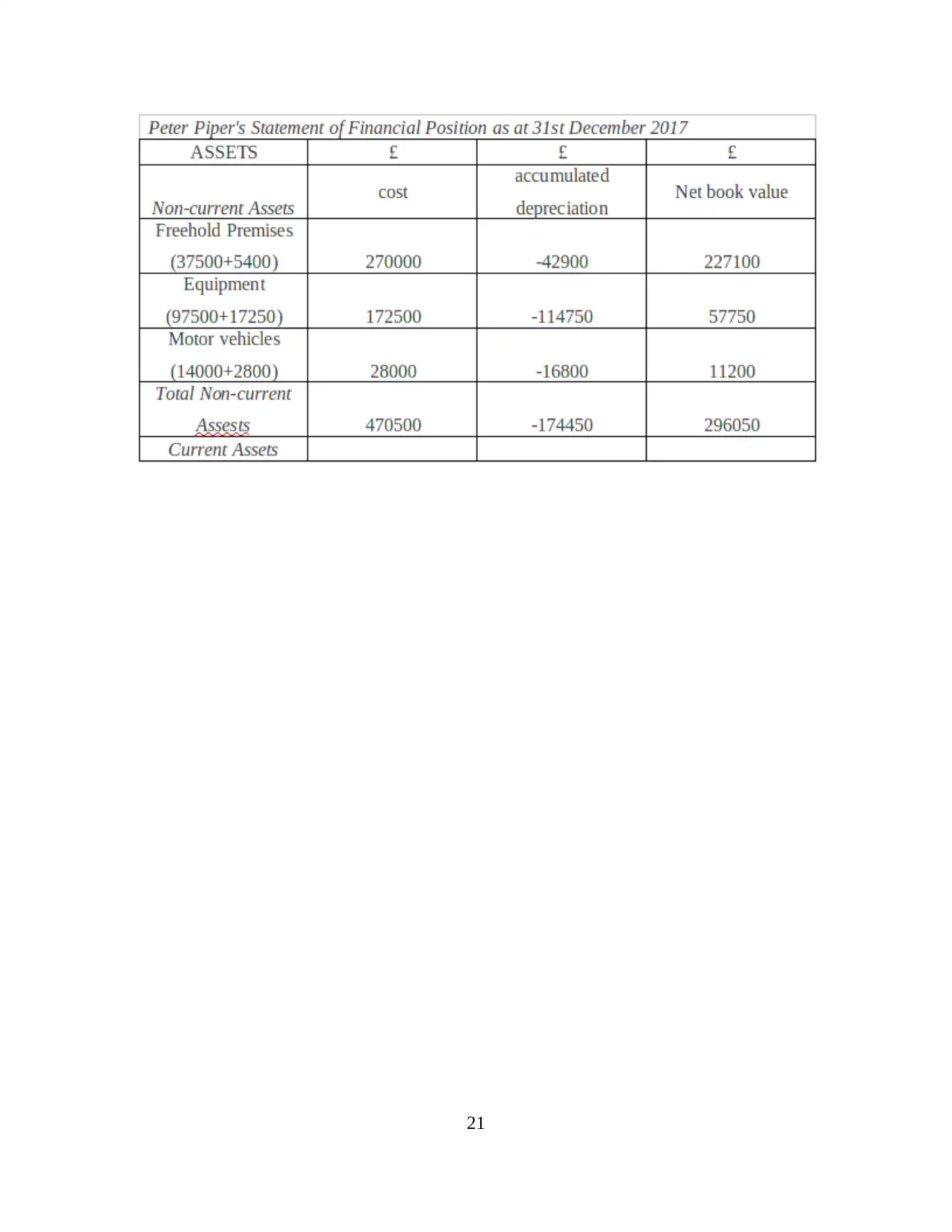
21
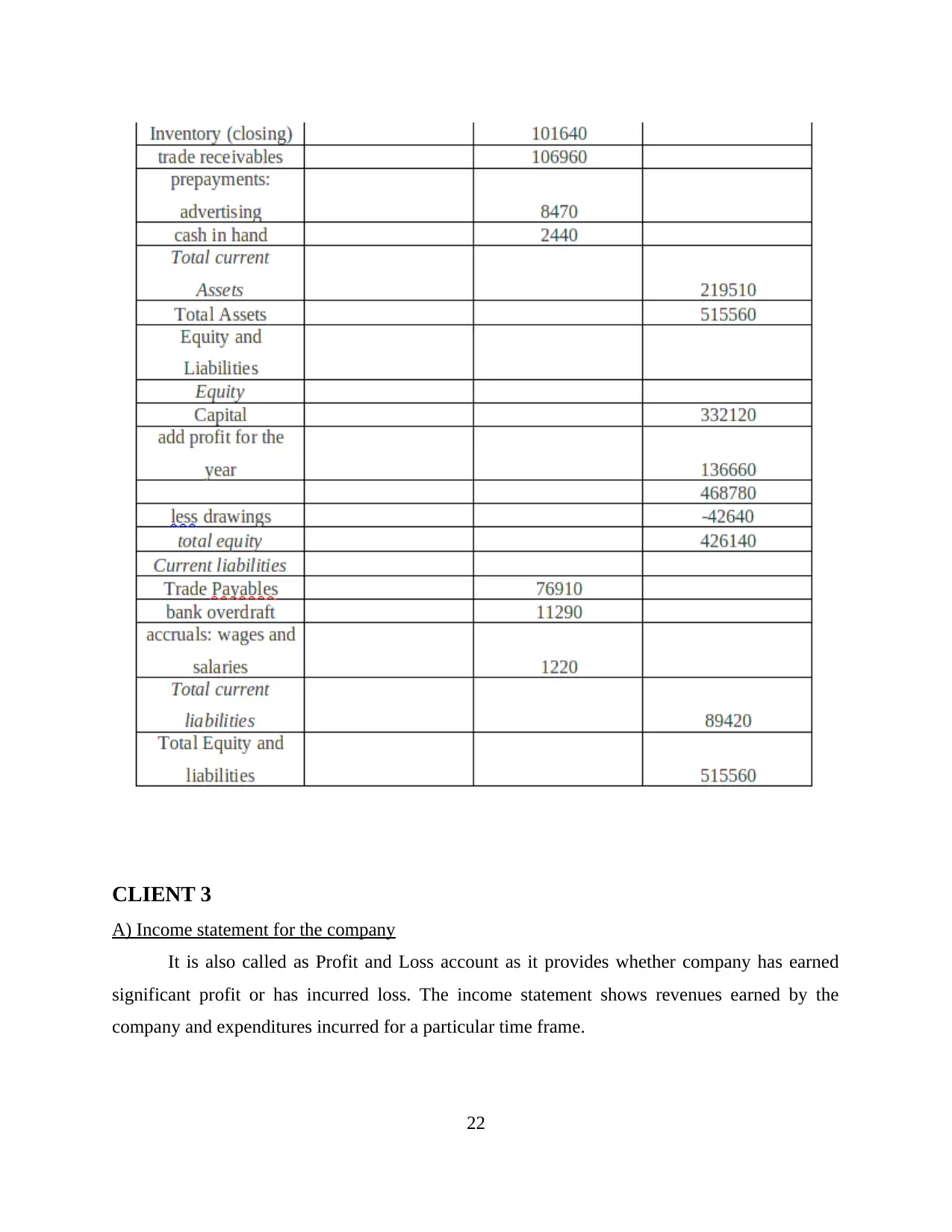
CLIENT 3
A) Income statement for the company
It is also called as Profit and Loss account as it provides whether company has earned
significant profit or has incurred loss. The income statement shows revenues earned by the
company and expenditures incurred for a particular time frame.
22
A) Income statement for the company
It is also called as Profit and Loss account as it provides whether company has earned
significant profit or has incurred loss. The income statement shows revenues earned by the
company and expenditures incurred for a particular time frame.
22
Paraphrase This Document
Need a fresh take? Get an instant paraphrase of this document with our AI Paraphraser
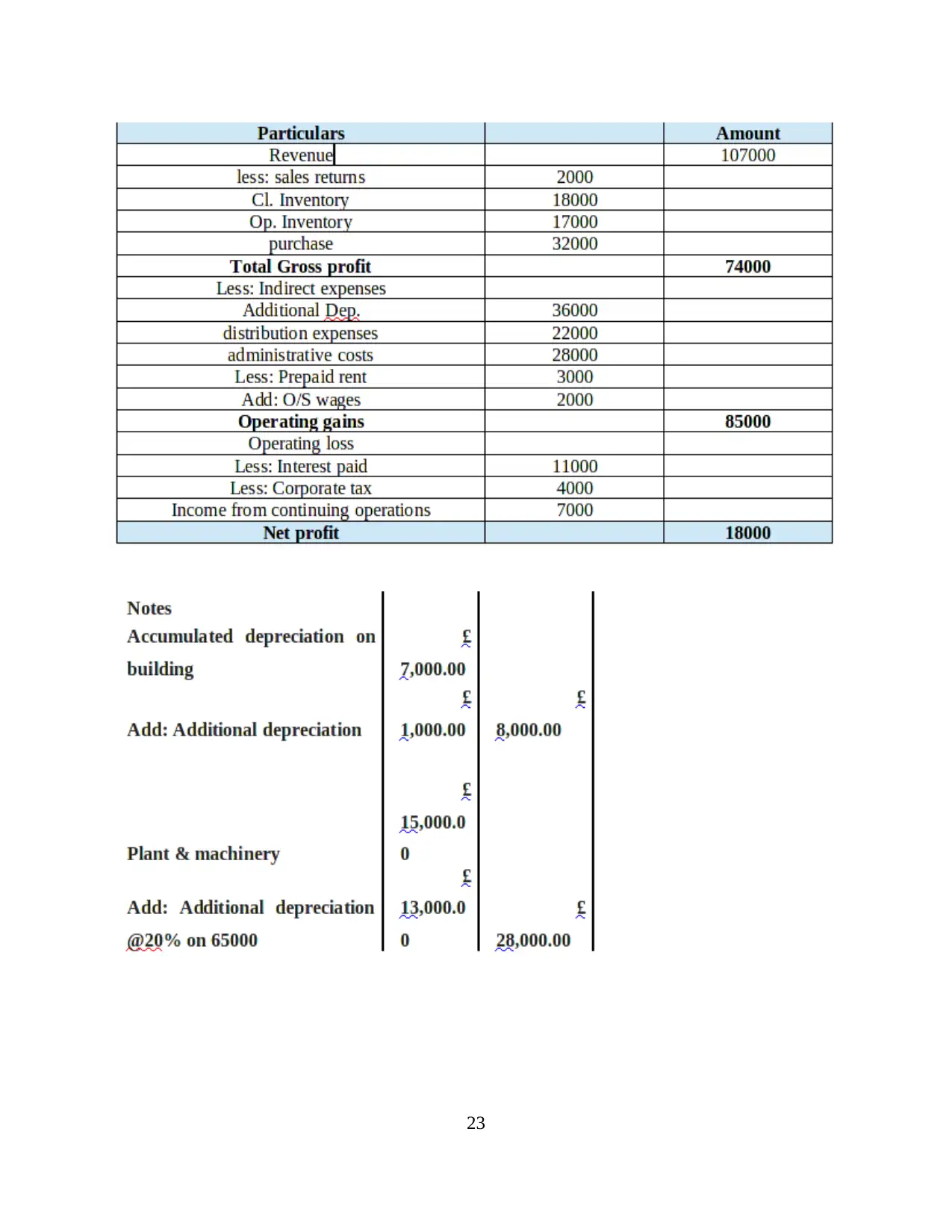
23
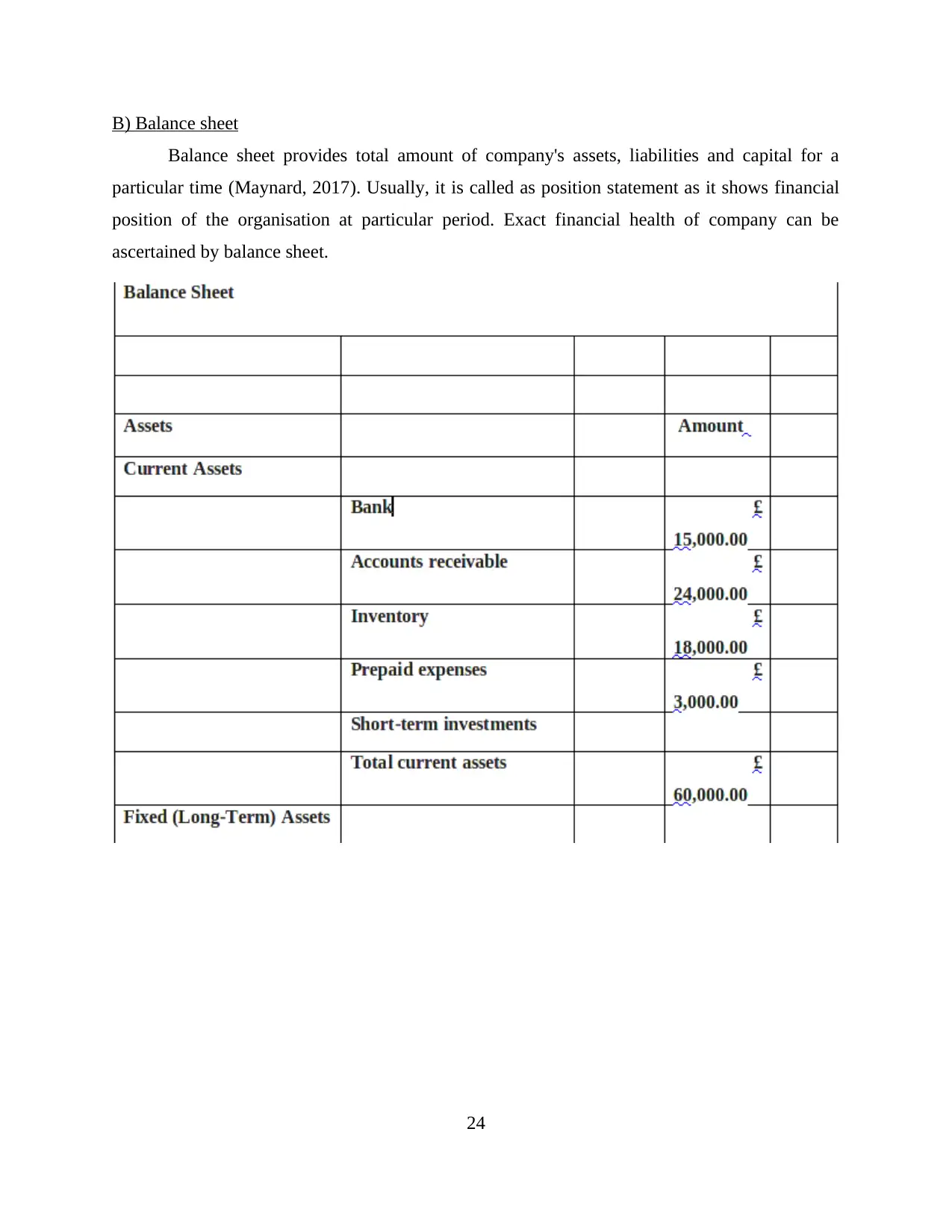
B) Balance sheet
Balance sheet provides total amount of company's assets, liabilities and capital for a
particular time (Maynard, 2017). Usually, it is called as position statement as it shows financial
position of the organisation at particular period. Exact financial health of company can be
ascertained by balance sheet.
24
Balance sheet provides total amount of company's assets, liabilities and capital for a
particular time (Maynard, 2017). Usually, it is called as position statement as it shows financial
position of the organisation at particular period. Exact financial health of company can be
ascertained by balance sheet.
24
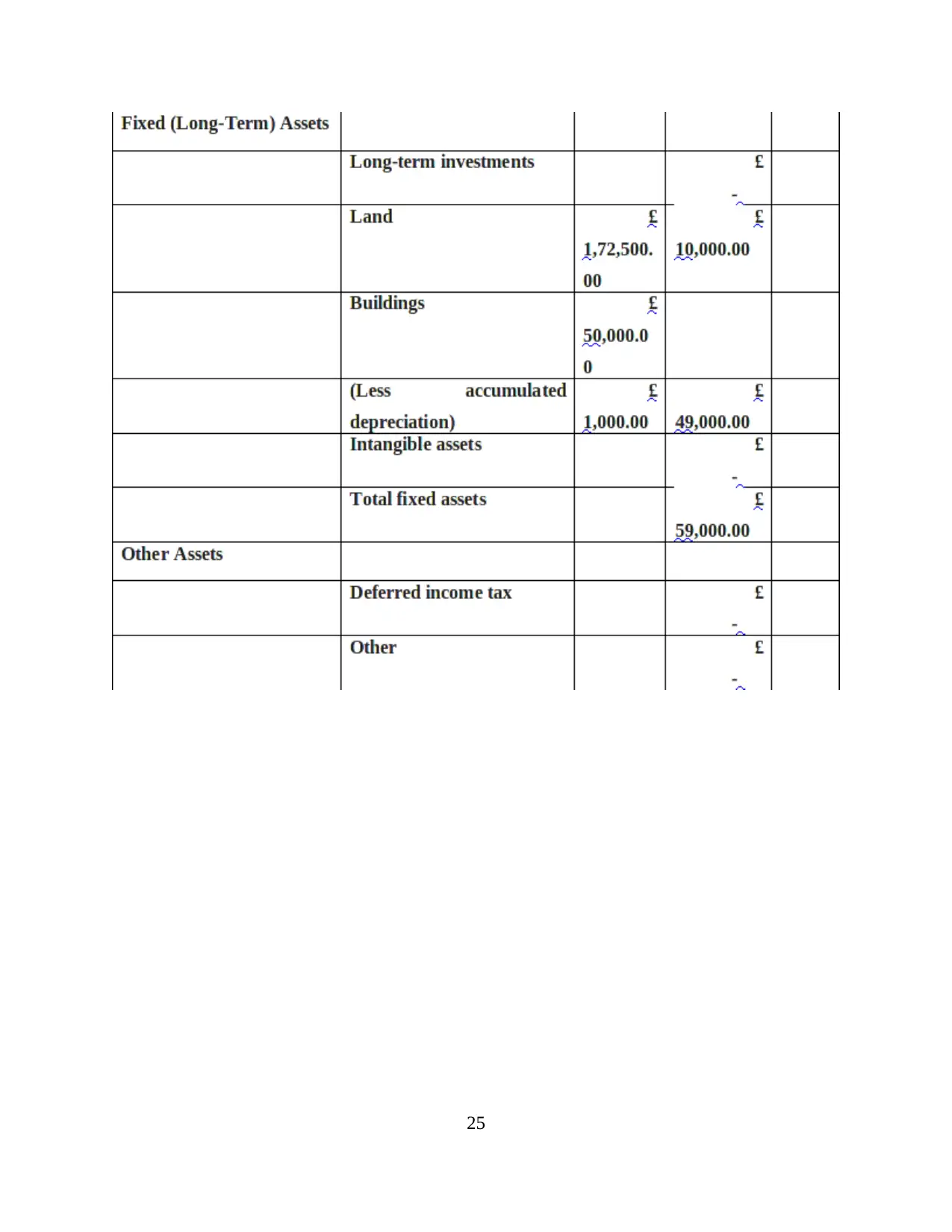
25
Secure Best Marks with AI Grader
Need help grading? Try our AI Grader for instant feedback on your assignments.
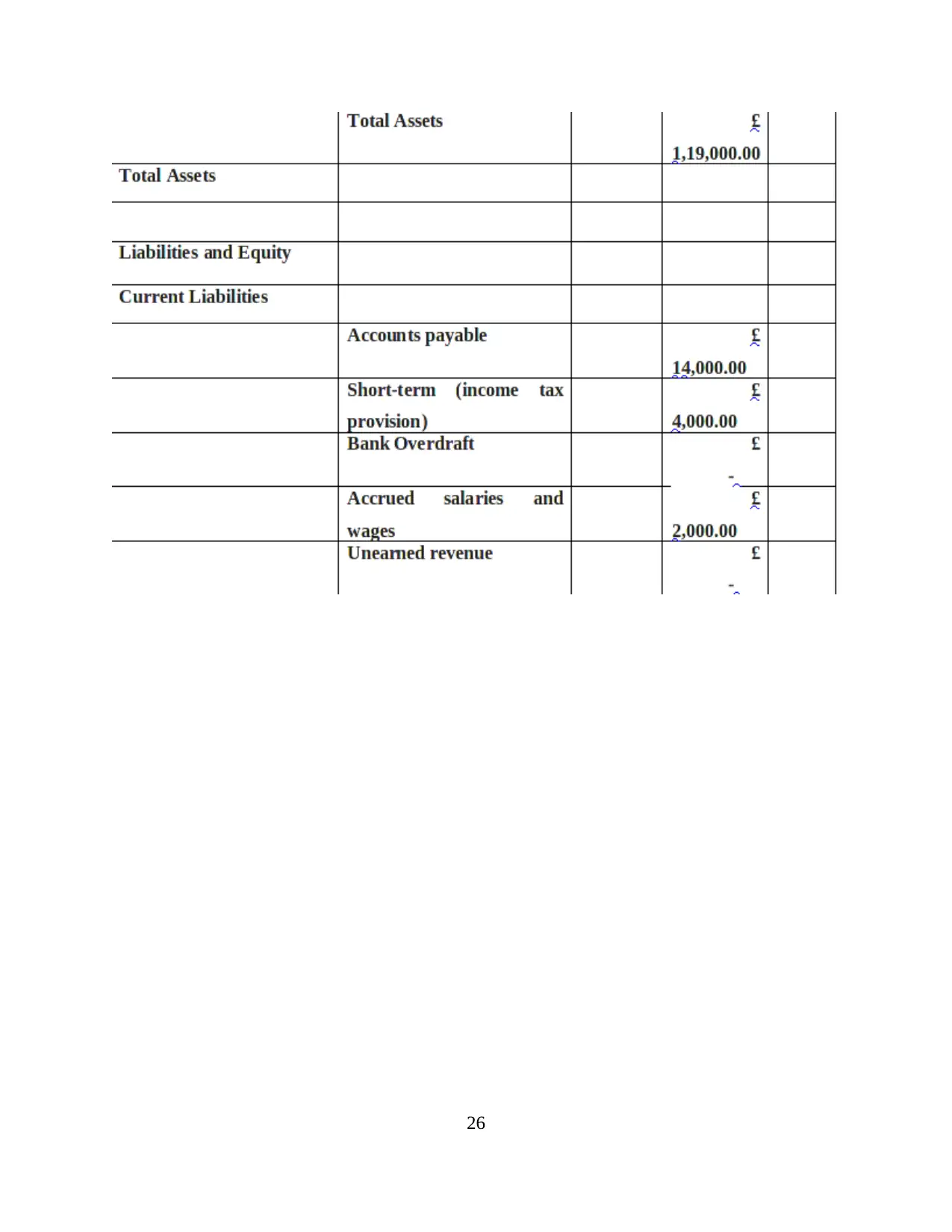
26
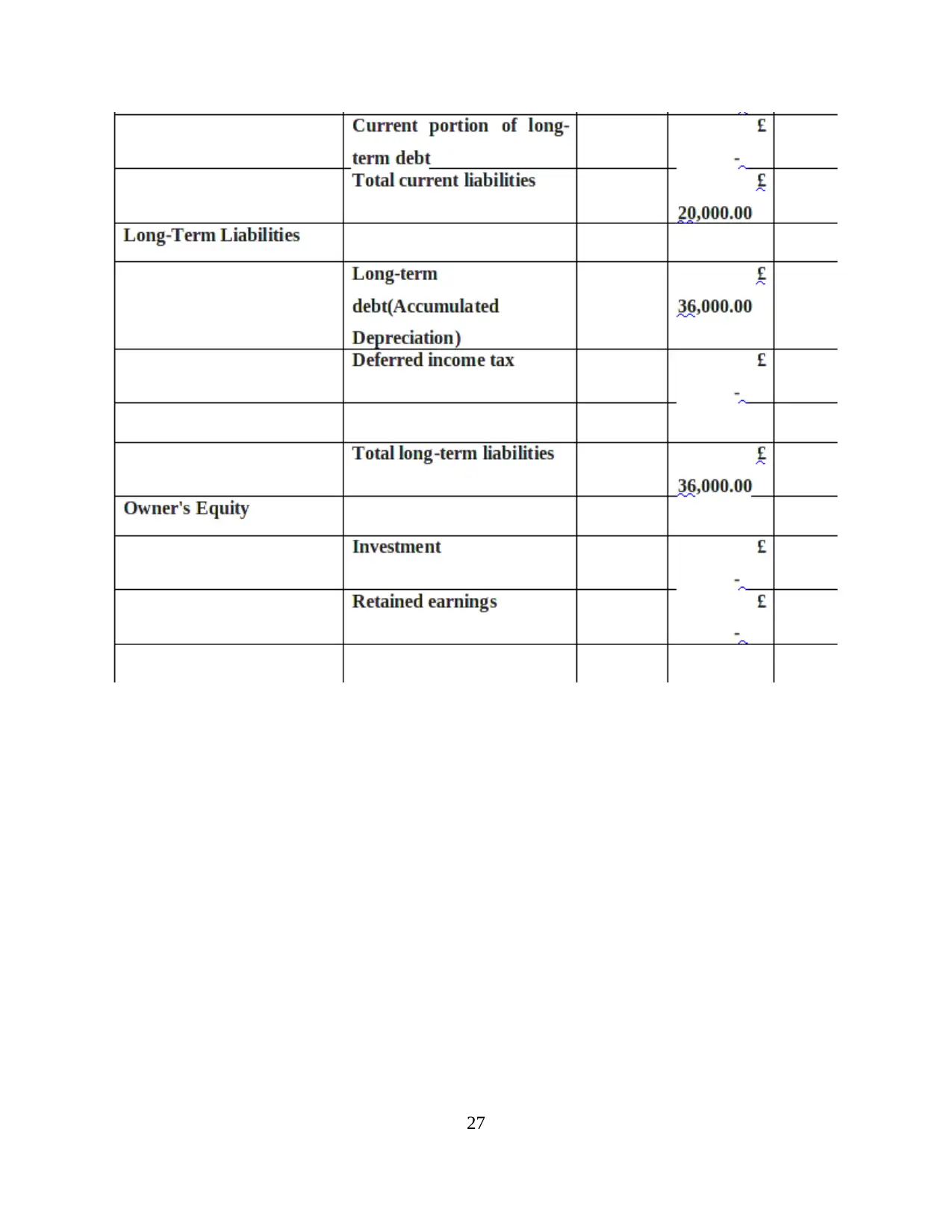
27
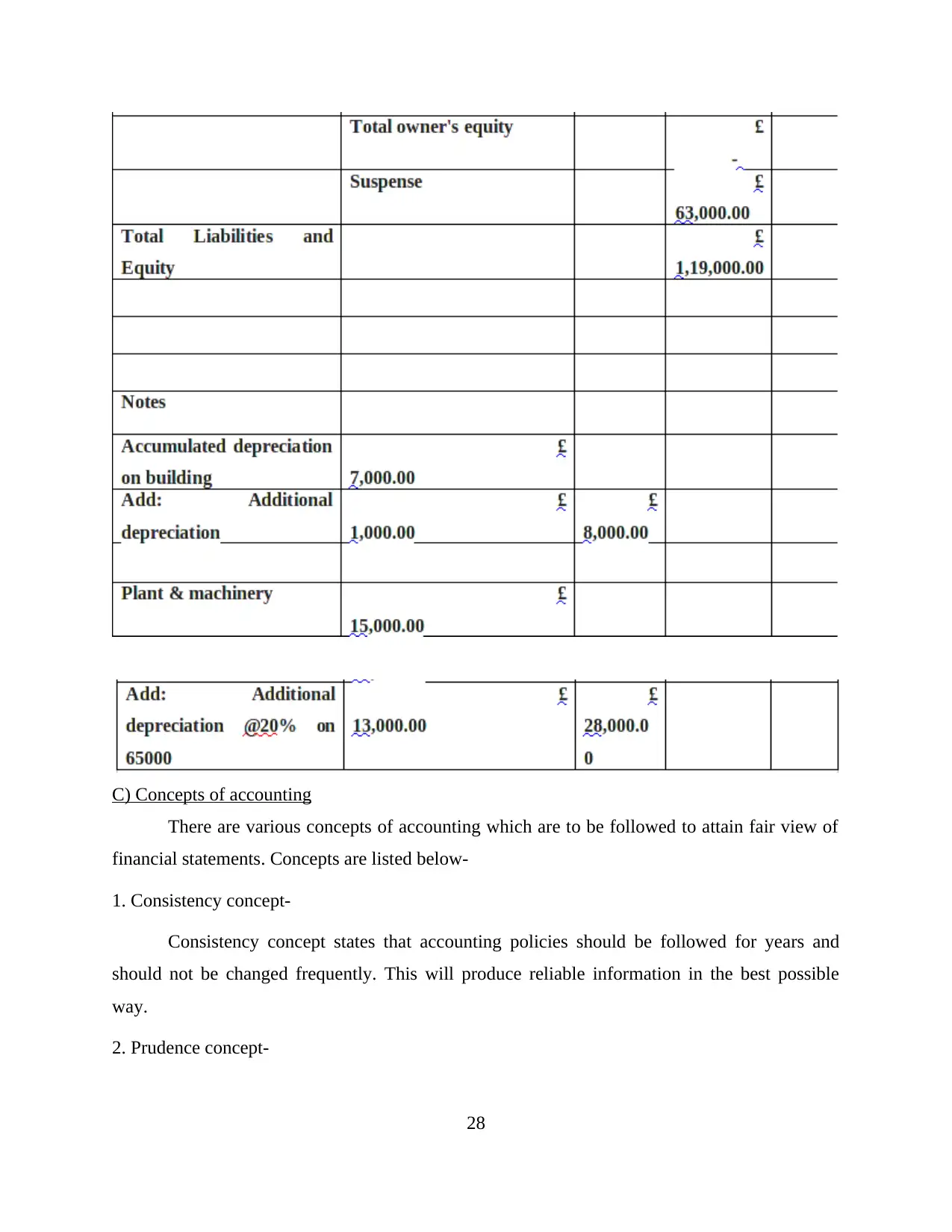
C) Concepts of accounting
There are various concepts of accounting which are to be followed to attain fair view of
financial statements. Concepts are listed below-
1. Consistency concept-
Consistency concept states that accounting policies should be followed for years and
should not be changed frequently. This will produce reliable information in the best possible
way.
2. Prudence concept-
28
There are various concepts of accounting which are to be followed to attain fair view of
financial statements. Concepts are listed below-
1. Consistency concept-
Consistency concept states that accounting policies should be followed for years and
should not be changed frequently. This will produce reliable information in the best possible
way.
2. Prudence concept-
28
Paraphrase This Document
Need a fresh take? Get an instant paraphrase of this document with our AI Paraphraser
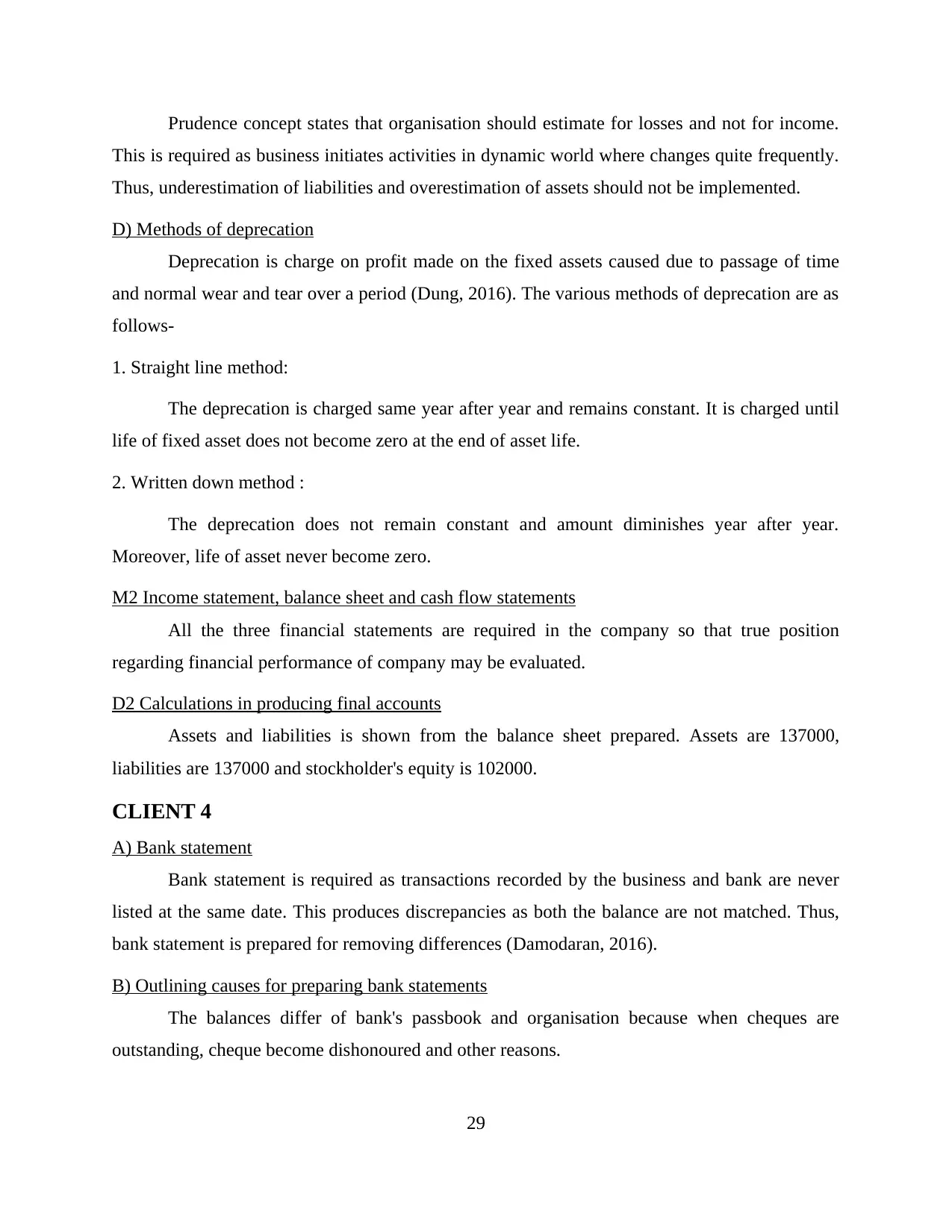
Prudence concept states that organisation should estimate for losses and not for income.
This is required as business initiates activities in dynamic world where changes quite frequently.
Thus, underestimation of liabilities and overestimation of assets should not be implemented.
D) Methods of deprecation
Deprecation is charge on profit made on the fixed assets caused due to passage of time
and normal wear and tear over a period (Dung, 2016). The various methods of deprecation are as
follows-
1. Straight line method:
The deprecation is charged same year after year and remains constant. It is charged until
life of fixed asset does not become zero at the end of asset life.
2. Written down method :
The deprecation does not remain constant and amount diminishes year after year.
Moreover, life of asset never become zero.
M2 Income statement, balance sheet and cash flow statements
All the three financial statements are required in the company so that true position
regarding financial performance of company may be evaluated.
D2 Calculations in producing final accounts
Assets and liabilities is shown from the balance sheet prepared. Assets are 137000,
liabilities are 137000 and stockholder's equity is 102000.
CLIENT 4
A) Bank statement
Bank statement is required as transactions recorded by the business and bank are never
listed at the same date. This produces discrepancies as both the balance are not matched. Thus,
bank statement is prepared for removing differences (Damodaran, 2016).
B) Outlining causes for preparing bank statements
The balances differ of bank's passbook and organisation because when cheques are
outstanding, cheque become dishonoured and other reasons.
29
This is required as business initiates activities in dynamic world where changes quite frequently.
Thus, underestimation of liabilities and overestimation of assets should not be implemented.
D) Methods of deprecation
Deprecation is charge on profit made on the fixed assets caused due to passage of time
and normal wear and tear over a period (Dung, 2016). The various methods of deprecation are as
follows-
1. Straight line method:
The deprecation is charged same year after year and remains constant. It is charged until
life of fixed asset does not become zero at the end of asset life.
2. Written down method :
The deprecation does not remain constant and amount diminishes year after year.
Moreover, life of asset never become zero.
M2 Income statement, balance sheet and cash flow statements
All the three financial statements are required in the company so that true position
regarding financial performance of company may be evaluated.
D2 Calculations in producing final accounts
Assets and liabilities is shown from the balance sheet prepared. Assets are 137000,
liabilities are 137000 and stockholder's equity is 102000.
CLIENT 4
A) Bank statement
Bank statement is required as transactions recorded by the business and bank are never
listed at the same date. This produces discrepancies as both the balance are not matched. Thus,
bank statement is prepared for removing differences (Damodaran, 2016).
B) Outlining causes for preparing bank statements
The balances differ of bank's passbook and organisation because when cheques are
outstanding, cheque become dishonoured and other reasons.
29
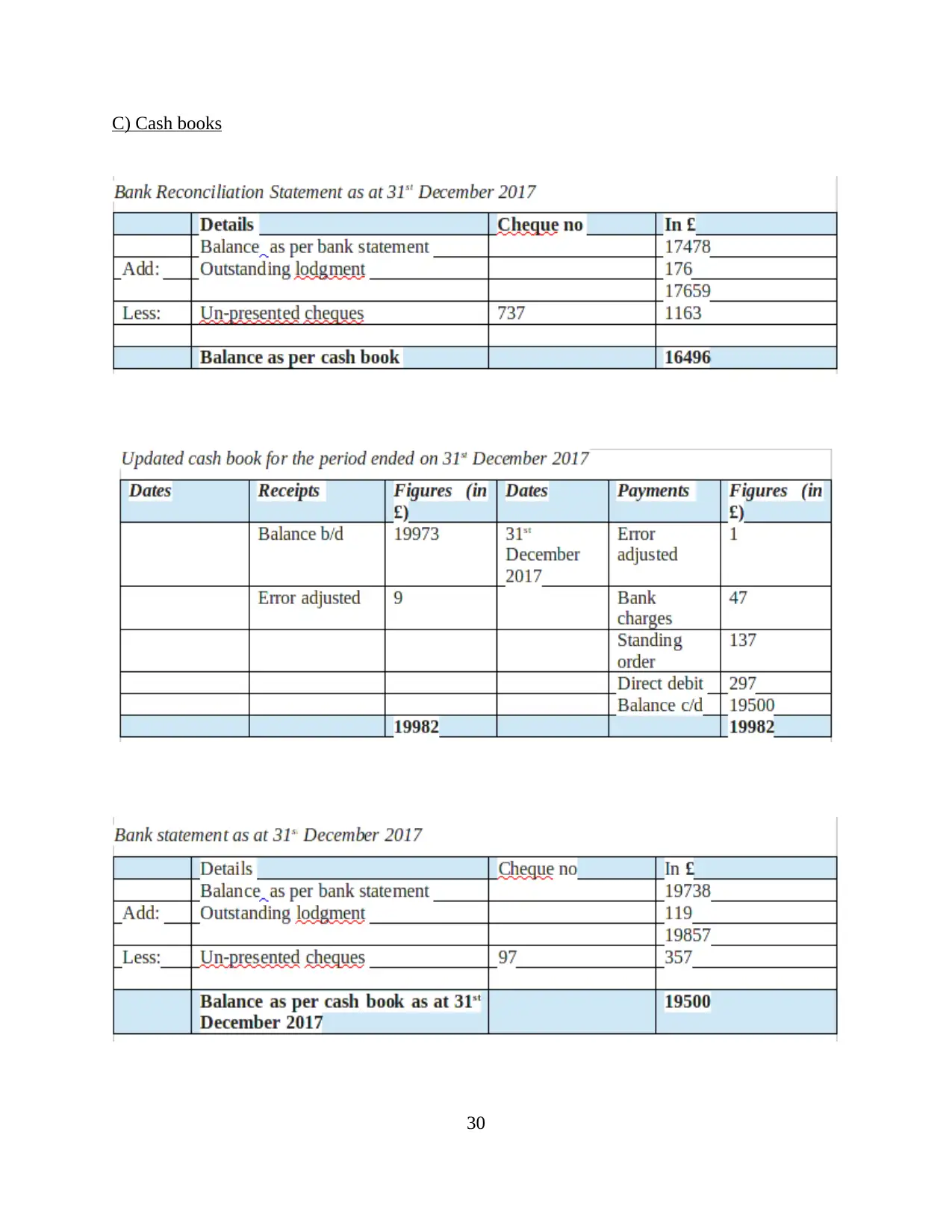
C) Cash books
30
30
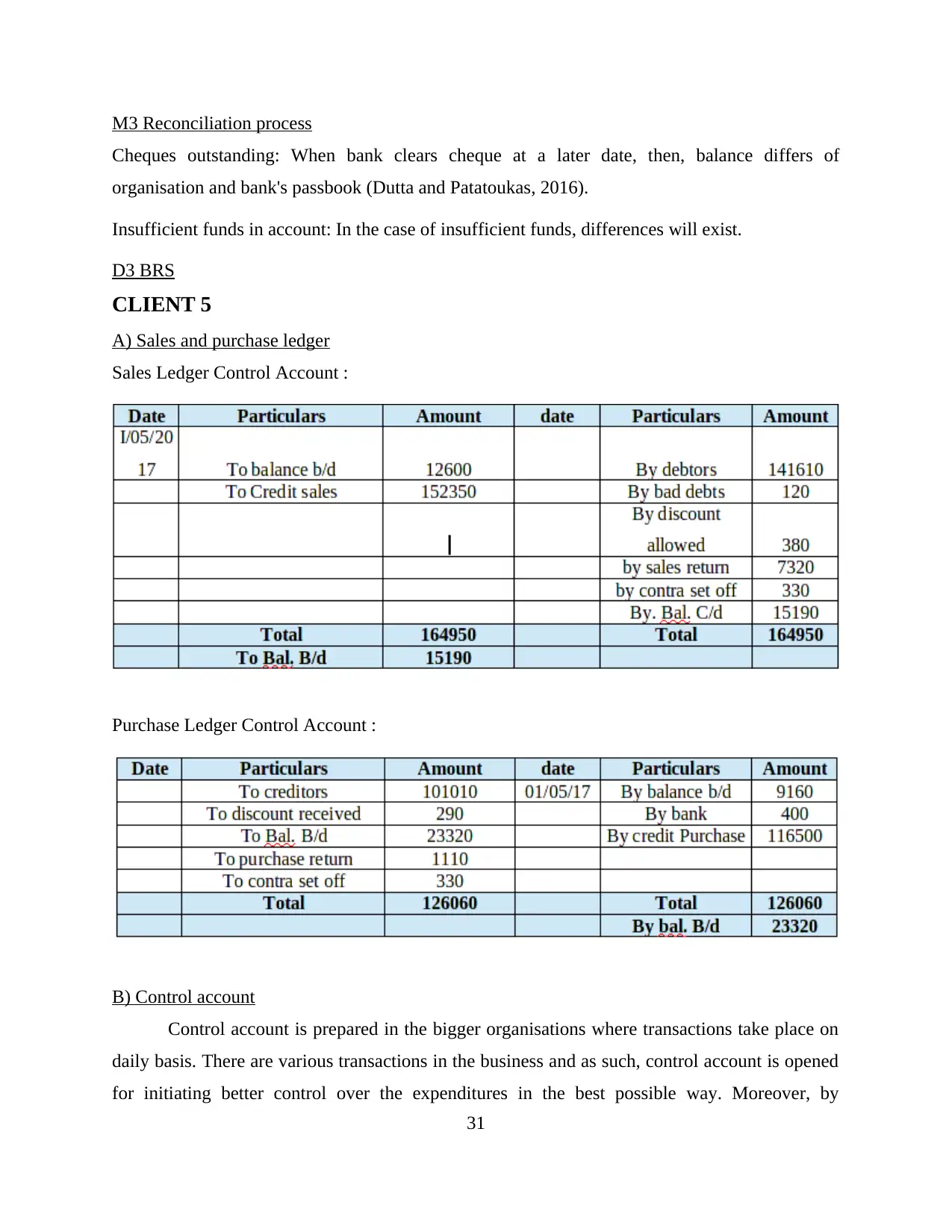
M3 Reconciliation process
Cheques outstanding: When bank clears cheque at a later date, then, balance differs of
organisation and bank's passbook (Dutta and Patatoukas, 2016).
Insufficient funds in account: In the case of insufficient funds, differences will exist.
D3 BRS
CLIENT 5
A) Sales and purchase ledger
Sales Ledger Control Account :
Purchase Ledger Control Account :
B) Control account
Control account is prepared in the bigger organisations where transactions take place on
daily basis. There are various transactions in the business and as such, control account is opened
for initiating better control over the expenditures in the best possible way. Moreover, by
31
Cheques outstanding: When bank clears cheque at a later date, then, balance differs of
organisation and bank's passbook (Dutta and Patatoukas, 2016).
Insufficient funds in account: In the case of insufficient funds, differences will exist.
D3 BRS
CLIENT 5
A) Sales and purchase ledger
Sales Ledger Control Account :
Purchase Ledger Control Account :
B) Control account
Control account is prepared in the bigger organisations where transactions take place on
daily basis. There are various transactions in the business and as such, control account is opened
for initiating better control over the expenditures in the best possible way. Moreover, by
31
Secure Best Marks with AI Grader
Need help grading? Try our AI Grader for instant feedback on your assignments.
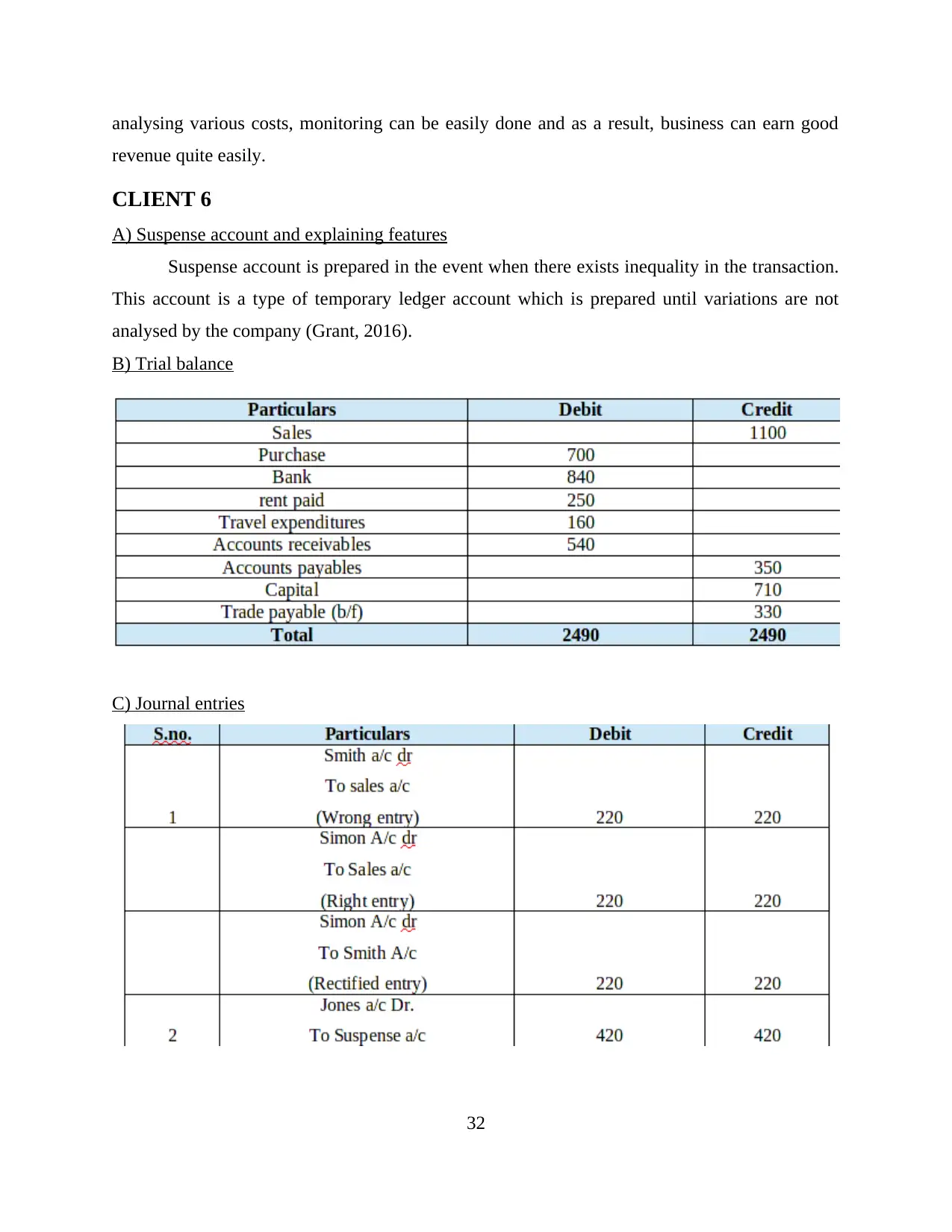
analysing various costs, monitoring can be easily done and as a result, business can earn good
revenue quite easily.
CLIENT 6
A) Suspense account and explaining features
Suspense account is prepared in the event when there exists inequality in the transaction.
This account is a type of temporary ledger account which is prepared until variations are not
analysed by the company (Grant, 2016).
B) Trial balance
C) Journal entries
32
revenue quite easily.
CLIENT 6
A) Suspense account and explaining features
Suspense account is prepared in the event when there exists inequality in the transaction.
This account is a type of temporary ledger account which is prepared until variations are not
analysed by the company (Grant, 2016).
B) Trial balance
C) Journal entries
32
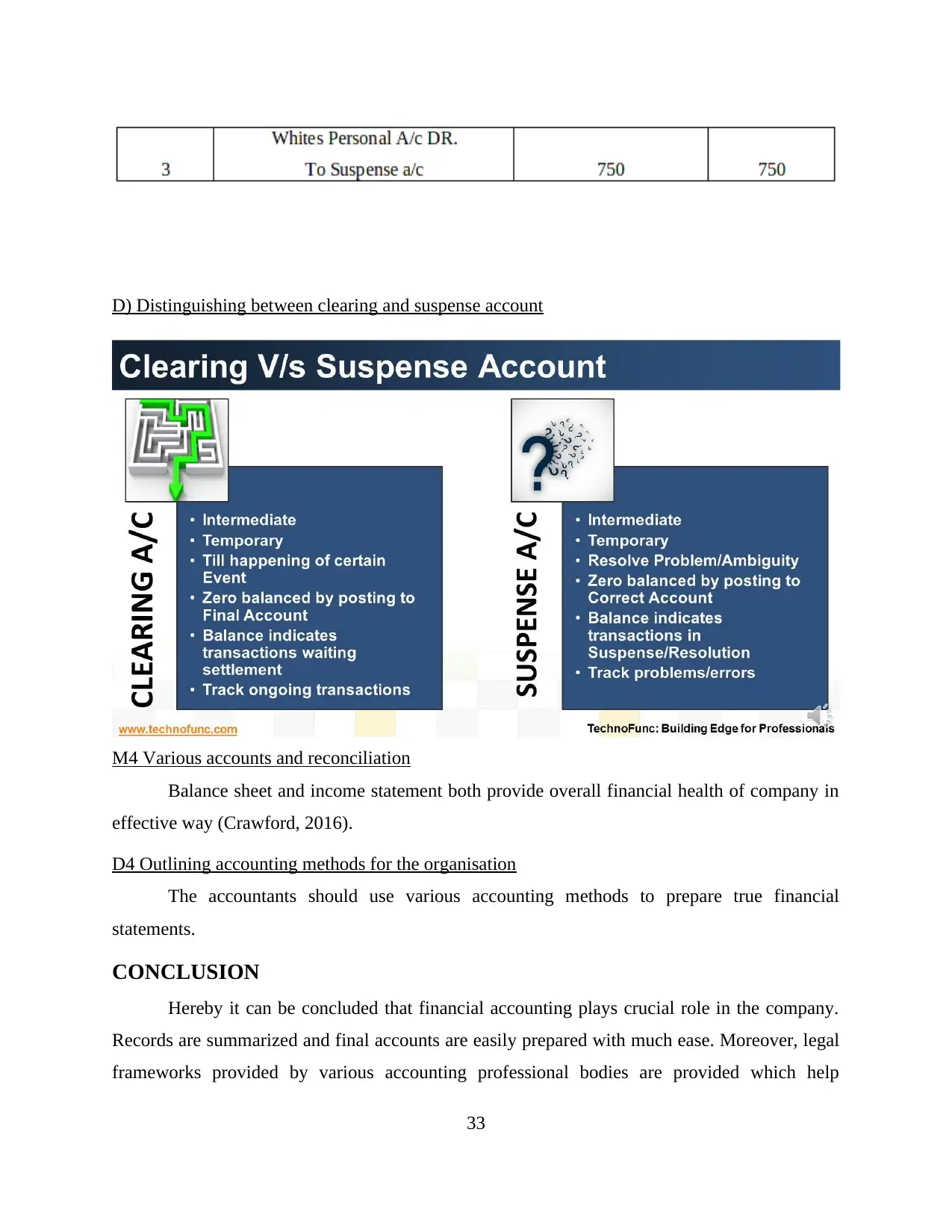
D) Distinguishing between clearing and suspense account
M4 Various accounts and reconciliation
Balance sheet and income statement both provide overall financial health of company in
effective way (Crawford, 2016).
D4 Outlining accounting methods for the organisation
The accountants should use various accounting methods to prepare true financial
statements.
CONCLUSION
Hereby it can be concluded that financial accounting plays crucial role in the company.
Records are summarized and final accounts are easily prepared with much ease. Moreover, legal
frameworks provided by various accounting professional bodies are provided which help
33
M4 Various accounts and reconciliation
Balance sheet and income statement both provide overall financial health of company in
effective way (Crawford, 2016).
D4 Outlining accounting methods for the organisation
The accountants should use various accounting methods to prepare true financial
statements.
CONCLUSION
Hereby it can be concluded that financial accounting plays crucial role in the company.
Records are summarized and final accounts are easily prepared with much ease. Moreover, legal
frameworks provided by various accounting professional bodies are provided which help
33
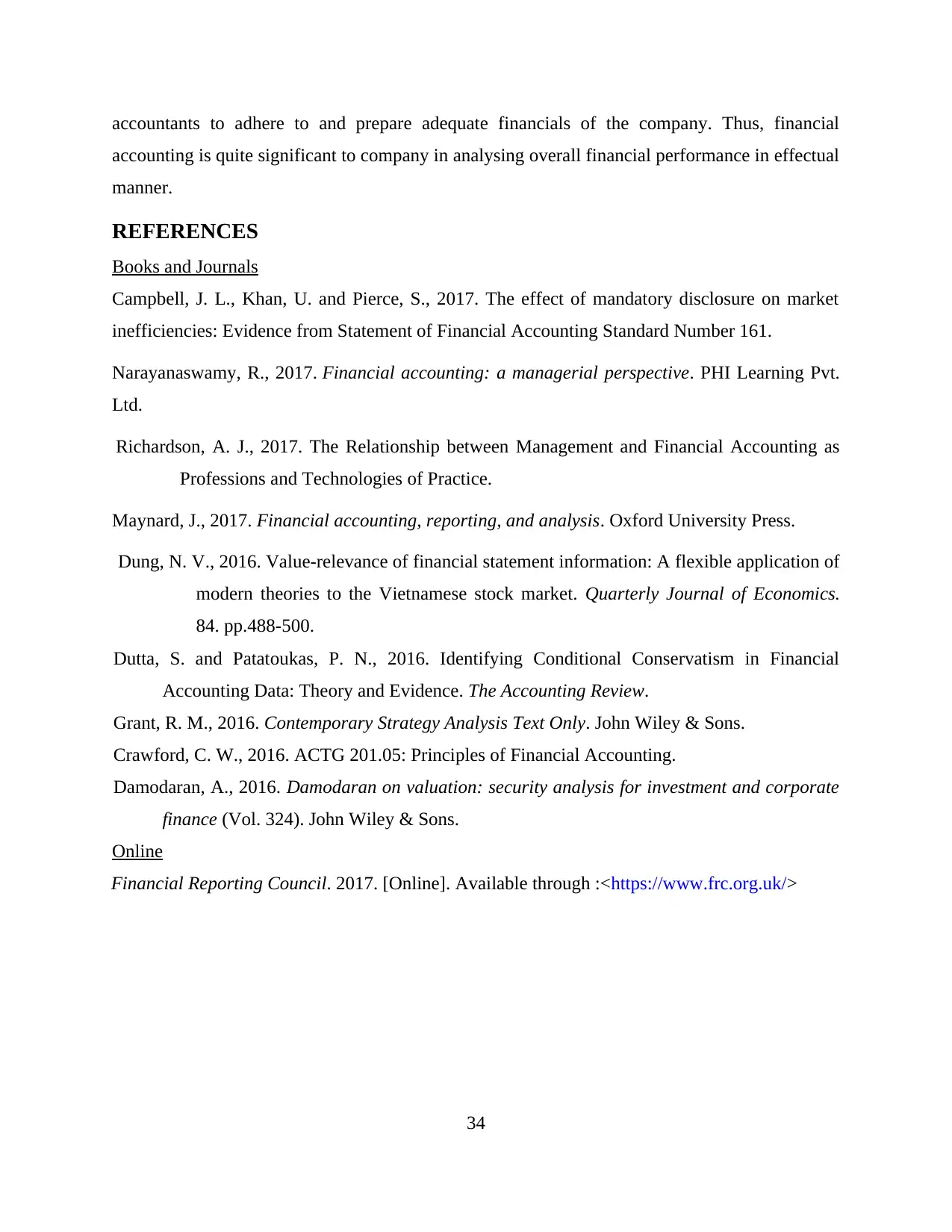
accountants to adhere to and prepare adequate financials of the company. Thus, financial
accounting is quite significant to company in analysing overall financial performance in effectual
manner.
REFERENCES
Books and Journals
Campbell, J. L., Khan, U. and Pierce, S., 2017. The effect of mandatory disclosure on market
inefficiencies: Evidence from Statement of Financial Accounting Standard Number 161.
Narayanaswamy, R., 2017. Financial accounting: a managerial perspective. PHI Learning Pvt.
Ltd.
Richardson, A. J., 2017. The Relationship between Management and Financial Accounting as
Professions and Technologies of Practice.
Maynard, J., 2017. Financial accounting, reporting, and analysis. Oxford University Press.
Dung, N. V., 2016. Value-relevance of financial statement information: A flexible application of
modern theories to the Vietnamese stock market. Quarterly Journal of Economics.
84. pp.488-500.
Dutta, S. and Patatoukas, P. N., 2016. Identifying Conditional Conservatism in Financial
Accounting Data: Theory and Evidence. The Accounting Review.
Grant, R. M., 2016. Contemporary Strategy Analysis Text Only. John Wiley & Sons.
Crawford, C. W., 2016. ACTG 201.05: Principles of Financial Accounting.
Damodaran, A., 2016. Damodaran on valuation: security analysis for investment and corporate
finance (Vol. 324). John Wiley & Sons.
Online
Financial Reporting Council. 2017. [Online]. Available through :<https://www.frc.org.uk/>
34
accounting is quite significant to company in analysing overall financial performance in effectual
manner.
REFERENCES
Books and Journals
Campbell, J. L., Khan, U. and Pierce, S., 2017. The effect of mandatory disclosure on market
inefficiencies: Evidence from Statement of Financial Accounting Standard Number 161.
Narayanaswamy, R., 2017. Financial accounting: a managerial perspective. PHI Learning Pvt.
Ltd.
Richardson, A. J., 2017. The Relationship between Management and Financial Accounting as
Professions and Technologies of Practice.
Maynard, J., 2017. Financial accounting, reporting, and analysis. Oxford University Press.
Dung, N. V., 2016. Value-relevance of financial statement information: A flexible application of
modern theories to the Vietnamese stock market. Quarterly Journal of Economics.
84. pp.488-500.
Dutta, S. and Patatoukas, P. N., 2016. Identifying Conditional Conservatism in Financial
Accounting Data: Theory and Evidence. The Accounting Review.
Grant, R. M., 2016. Contemporary Strategy Analysis Text Only. John Wiley & Sons.
Crawford, C. W., 2016. ACTG 201.05: Principles of Financial Accounting.
Damodaran, A., 2016. Damodaran on valuation: security analysis for investment and corporate
finance (Vol. 324). John Wiley & Sons.
Online
Financial Reporting Council. 2017. [Online]. Available through :<https://www.frc.org.uk/>
34
1 out of 37
Related Documents
Your All-in-One AI-Powered Toolkit for Academic Success.
+13062052269
info@desklib.com
Available 24*7 on WhatsApp / Email
![[object Object]](/_next/static/media/star-bottom.7253800d.svg)
Unlock your academic potential
© 2024 | Zucol Services PVT LTD | All rights reserved.





